The Unboxing of the Mona Lisa, 1945
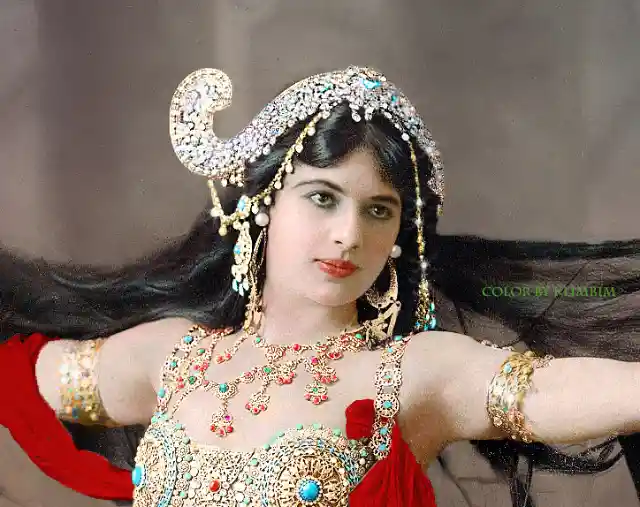

Most of these photographs had been forgotten after being locked away for such a long time. Many were misplaced in dusty cellars, sealed inside boxes, and crammed up among other anachronistic things that the sun no longer had the chance to gaze on. Thanks to a technology that allows them to be accurately colorized, however, these black-and-white windows into history are able to breathe in new life, growing into something far more revealing than anyone expected.
Not all of them are suitable for all ages, but these colorized vintage images grant us something fresh – however ironic that may sound – from the past. These moments deserve to be re-experienced and their lessons learned anew by present-day generations.
A Motley of Sizes
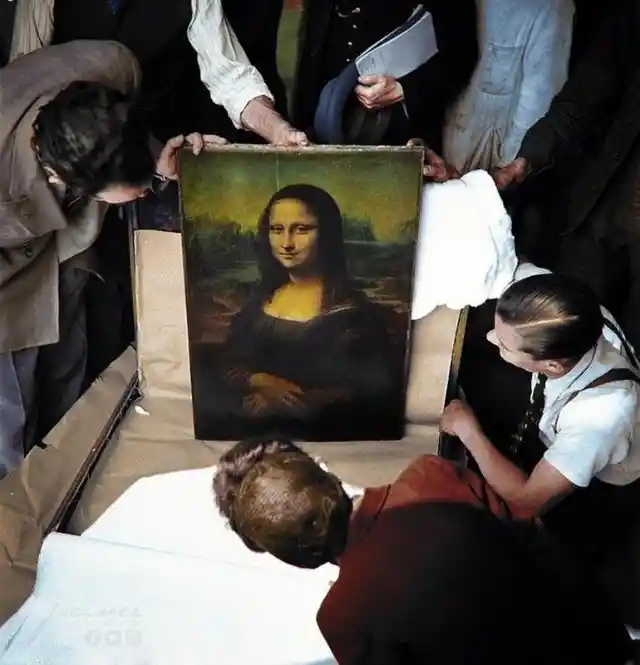
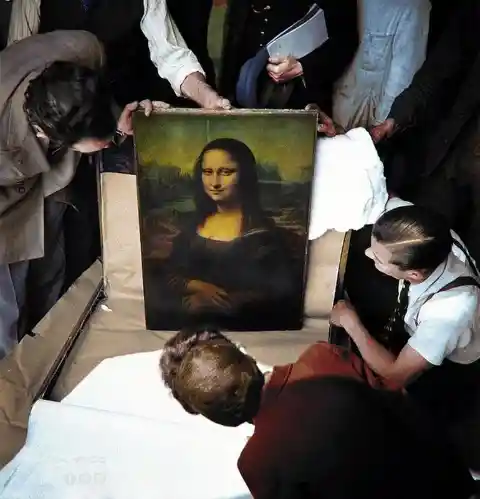
Along with Adolf Hitler’s ambition of dominating the world came his plan to steal thousands of art masterpieces so he could someday build a super museum in the town of Linz, Austria. This was where he’d spent most of his boyhood.
To keep the Mona Lisa and other artworks safe from the Nazis, National Museums Director Jacques Jaujard arranged their secret transport during the announcement of Germany and the Soviet Union’s Nonaggression Pact, sending them safely to the Loire Valley on August 28, 1939.
The Adorable Brigitte Bardot
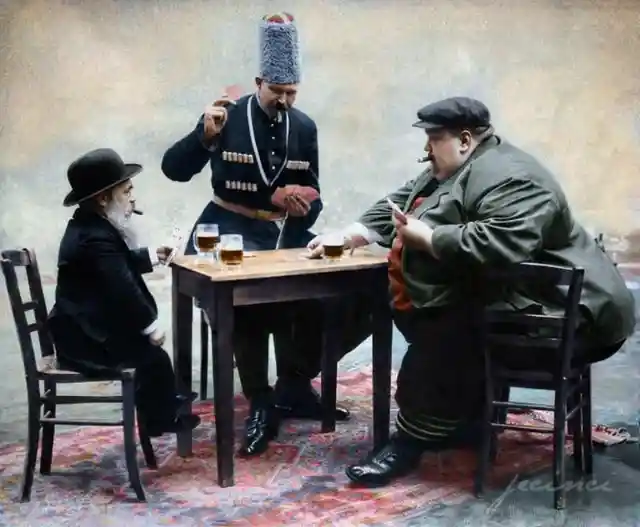
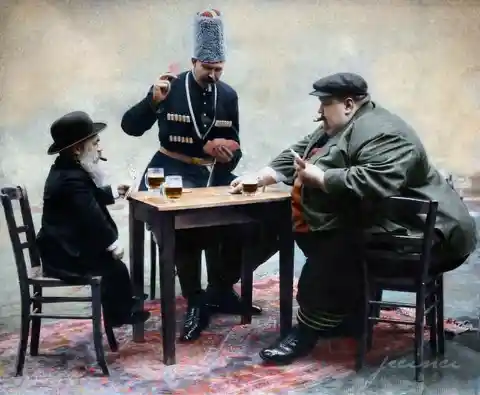
This is a modernized photograph of Europe’s three record-holders at the time. Taken in 1913, it shows stunning men of incredible sizes. Playing a game of cards with a round of drinks, we see the continent’s shortest, tallest, and fattest man of the time, each trying to outsmart the other.
This is a photograph that has drawn the interest of many due to the great variance between each of its subjects. It’s beautiful to see such disparate individuals gathered together, enjoying each other’s company despite their physical dissimilarities. They are all different and yet the same.
German Brothers Meet Again Beyond the Iron Curtain


Young Brigitte Bardot’s beauty was well-fitted for the limelight. In the same year that she was featured on the cover of Elle magazine, the French actress started to land a few roles on the silver screen. She eventually became an international star and a pop culture icon of the ‘50s and ‘60s.
Unfortunately, B.B. felt that the gravity of her success was also a destructive force in her private life. Being alone in a bistro or a theater had become a rarity she desired, with people always trying to approach and pierce her peace. The young star longed to be left alone.
Vivian Leigh Plays the Role of Scarlett O’Hara
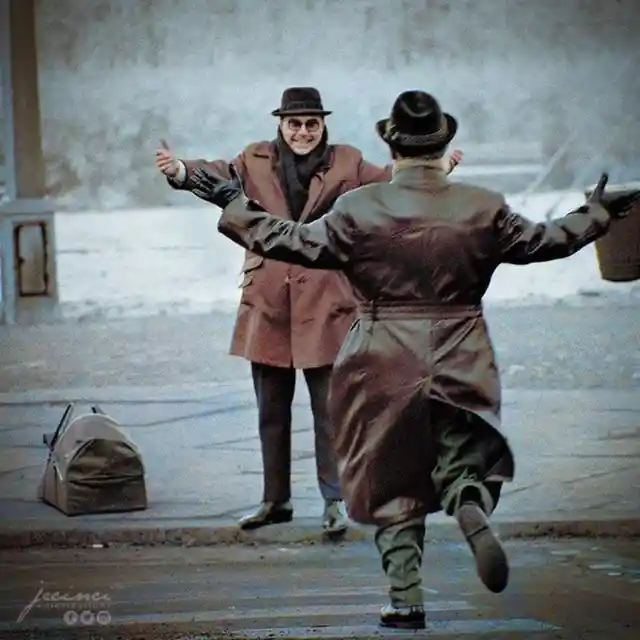
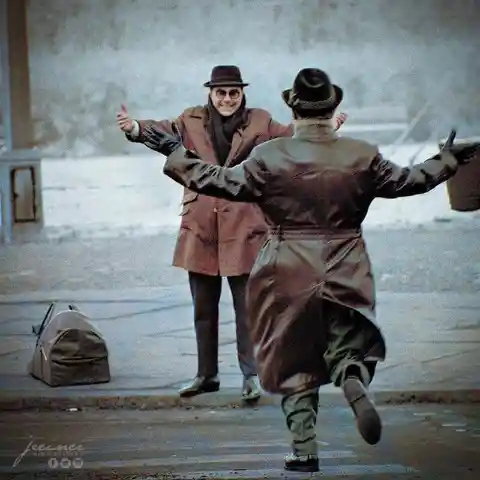
On August 12, 1961, the border between East and West Germany was sealed by the Soviets. The rampart was 155 km wide, effectively hemming in West Berlin. This was both a physical and a symbolic barrier – an ideological wall between opposing powers.
Two years after the wall was built, a border pass agreement was arranged between the East and the West, allowing West Berliners to cross the border. Many of those who had been stranded on the other side of the Iron Curtain in ‘61 were allowed to rejoin their families. The wall was torn down 25 years later, in 1989.
A Dog Joins Seaforth Highlanders in the Trenches

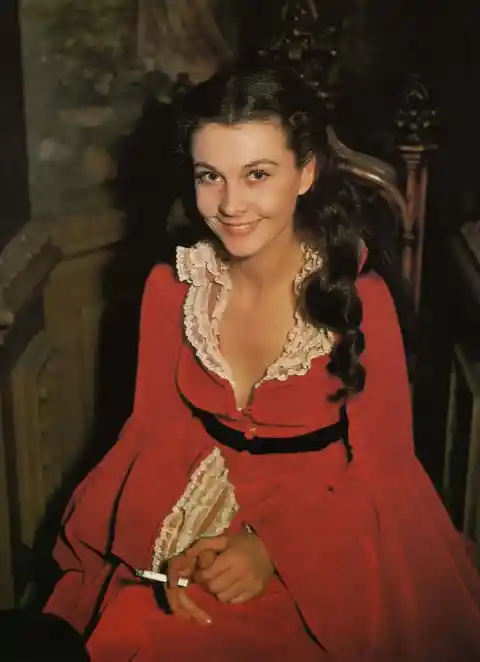
After Vivian Leigh read the novel Gone with the Wind, she instantly knew she wanted to play the role of Scarlett O’Hara. Though she was British and the character was a southern belle, Leigh was determined to play the role perfectly. Despite her love for it, she never believed the film would be a success.
Laurence Olivier, with whom she had a secret affair, shared her opinion on the matter and urged her to perform her part exceptionally well. Otherwise, her career could sink along with Gone with the Wind. How wrong both of them were! Leigh won an Academy Award for Best Actress for her performance.
Life on the Line, 1967
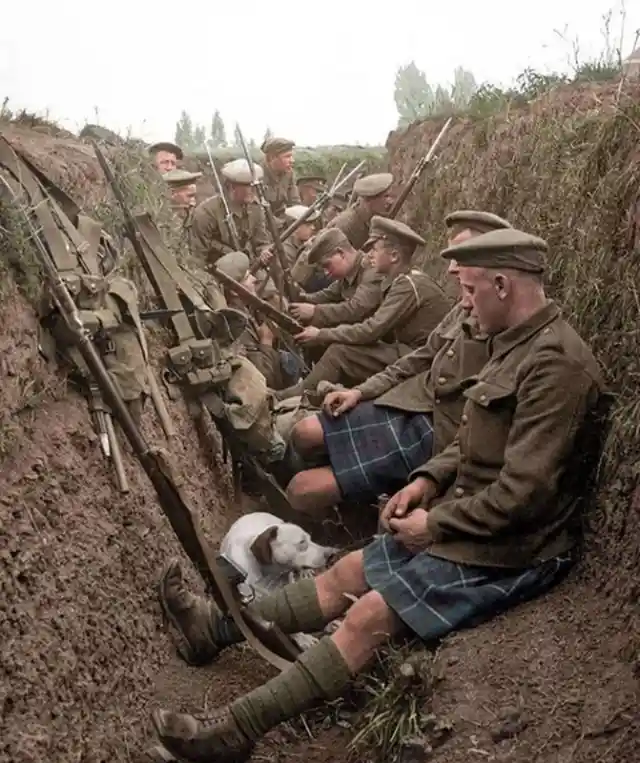
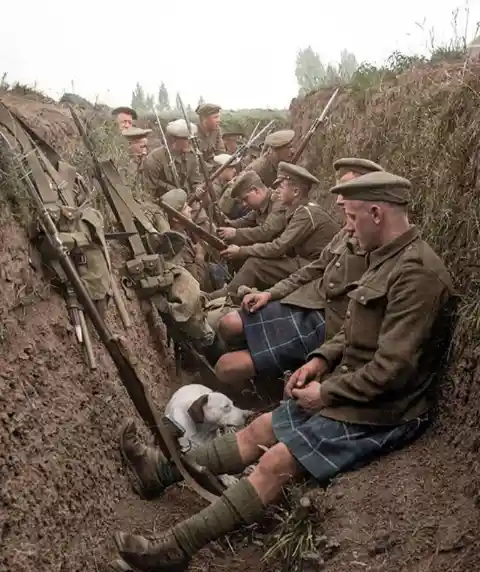
This pup found its way into the trenches of the Seaforth Highlanders, some of whom wore kilts while the riflemen wore trousers. At this moment, they were taking a break from a skirmish. These infantrymen were sent by Scotland to take part in the First World War against the Fascist-leaning nations (Germany, Turkey, and Austria-Hungary).
It was one of the most destructive conflicts the world has ever seen, triggered by the death of Austrian-Hungarian Archduke Franz Ferdinand and his wife by a Serb nationalist. This triggered a cascade of events that culminated in dangerous alliances formed by certain nations.
Rare Picture of a Samurai, 1863

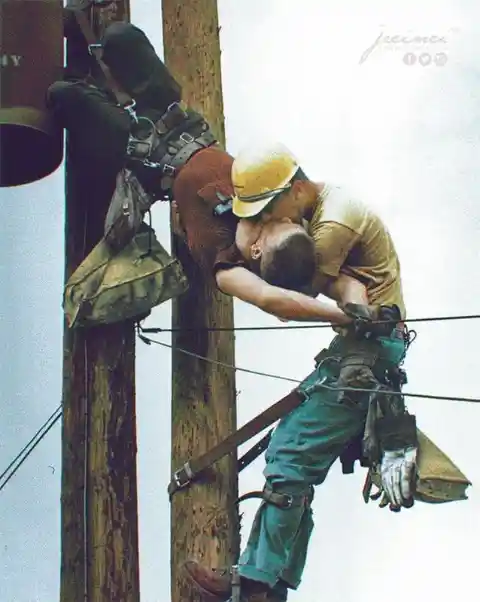
Rocco Morabito was driving in the vicinity when Randall G. Champion was electrocuted after accidentally touching the low-voltage line. He saw his co-worker JD Thompson run and climb the pole to catch Champion, now hanging upside down, and give him CPR. Morabito backed up and called for an ambulance.
It was Thompson’s presence of mind and quick thinking, giving mouth-to-mouth at such a crucial moment, that revived Champion before his life slipped away. Moments after the resuscitation, Thompson cried, “he’s breathing!” “The Kiss of Life” photo was captured by Morabito’s camera.
Thomas Griffith Taylor and Charles Wright on the Terra Nova Expedition
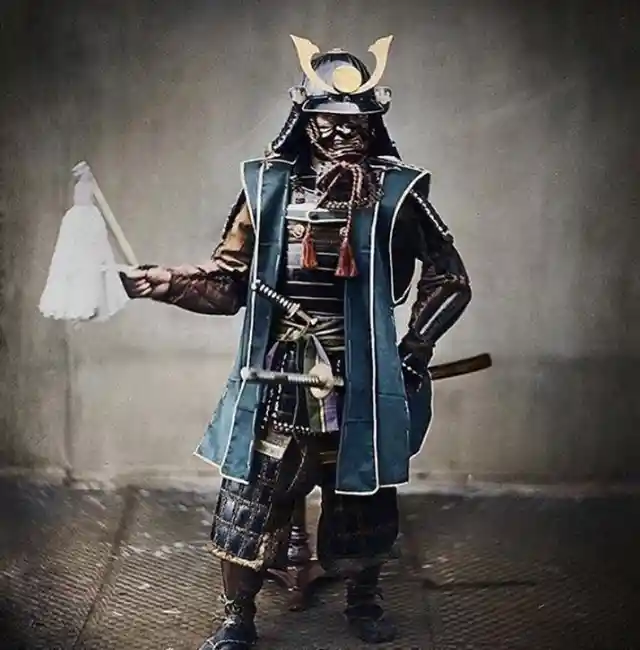

This photograph of a military commander in full gear is a testament to his nobility. It was taken by Felice Beato in 1863. The last of the samurai were rendered obsolete by Japan in 1876 and were gradually replaced by regular soldiers who were cheaper to maintain.
For artistic purposes, Beato chose to hand-paint the original version of this image. Most of his pictures of Japanese communities were shaded around the edges to make the subjects stand out, especially those taken in a studio and against a neutral background.
A Lone Player Guarding the Goal
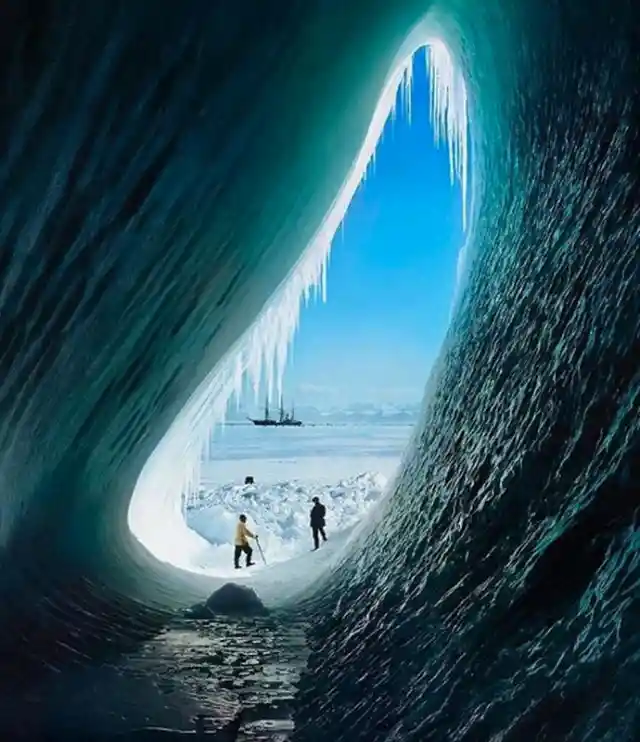
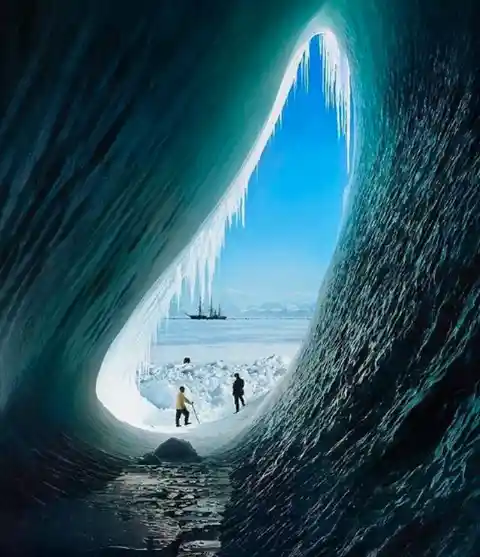
The Terra Nova sits still in the background as Taylor (Geologist) and Wright (Meteorologist) take in the preternaturally white view of Antarctica. The expedition was headed by Robert Falcon Scott, with the aim of reaching the South Pole first. In the end, they were bested by Roald Amundsen, a Norwegian explorer who beat them by 34 days.
The expedition team was able to bring home plants, fossils, and animals, contributing invaluable geographical and scientific understanding, especially with regard to the continental drift theory. Sadly, Scott and some of his members perished on their way back from the pole.
Marilyn Monroe Posing for Life Magazine, 1952


Jack Kelsey played for Arsenal from 1949-1963. In this 1954 photograph of the goalkeeper from Wales, he can be seen staring intently through the thick fog, watching for a stealthy ball that never came. This is reminiscent of a match between Chelsea and Stamford Ridge in 1937.
On that day the goalkeeper, like Kelsey in this picture, kept his guard while being cloaked in the gloom. Unbeknownst to him, the game had already been called off almost half an hour ago, and he was out there on his lonesome. All the other players had left the field for the dressing room, and the audience had marched out of the stadium.
Storytelling Between a Veteran and a Bunch of Boot Shiners
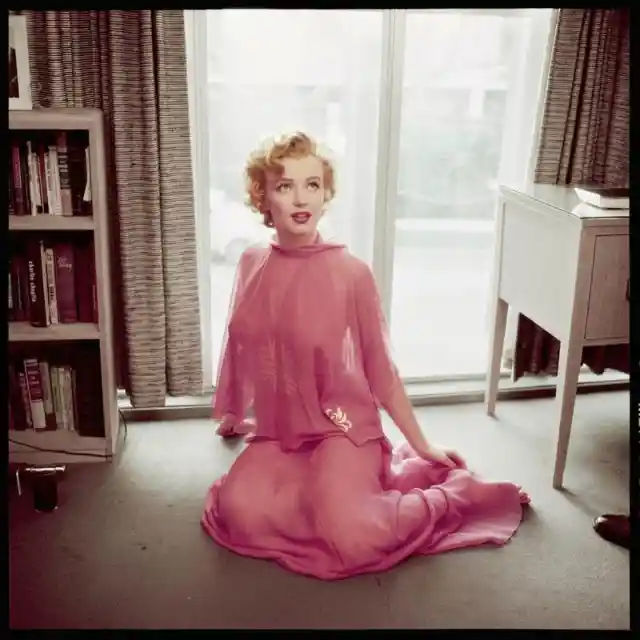
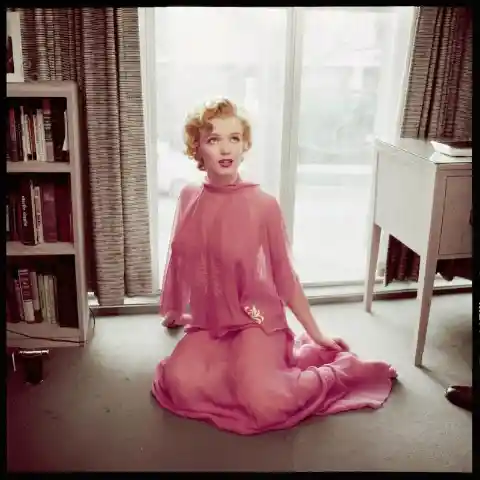
The American actress enjoyed posing in a bathing suit for silent movie actor Harold Lloyd. Before her breakthrough years, Marilyn Monroe frequented Lloyd’s estate for such collaborations, and she adored his abode at Greenacres because it gave her a sense of isolation and privacy.
Lloyd’s daughter became friends with Marilyn Monroe during those days and described her as the ideal guest. They used to have heart-to-heart talks whenever the actress was putting on makeup in one of their rooms, and Marilyn shared how she dreamed of having a child of her own one day.
The Beginning of the End of Segregation in Educational Institutions
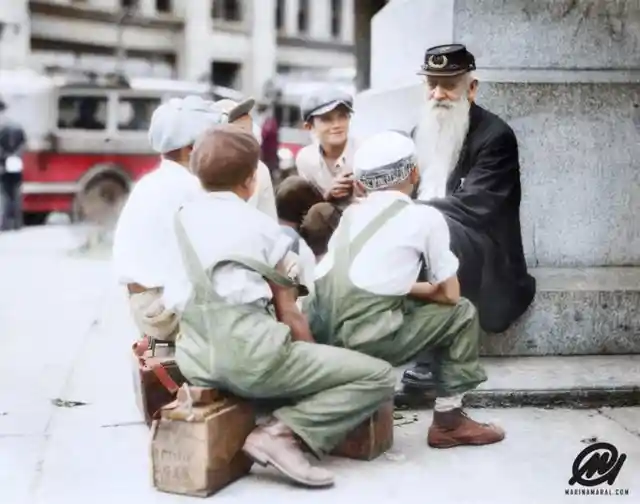
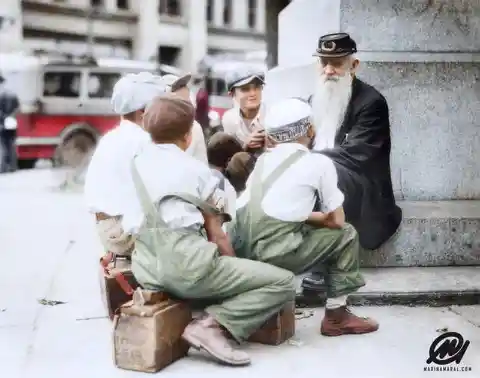
This photograph was taken in 1935. An aged Civil War veteran can be seen sitting on a curb in Pennsylvania. He was surrounded by boot shiners as soon as he sat down. He still wears the old soldier cap, perhaps the same one he wore on the battlefield between 1861 and 1865.
The kids had nothing much to do at that time, so they eagerly listened to his stories. He had, after all, been through something none of them could imagine. For his part, the old man hoped they’d learned from him and that history wouldn’t repeat itself.
The Trenches
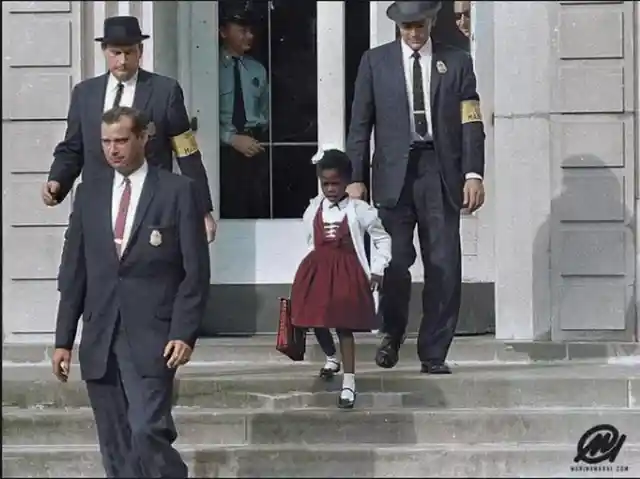
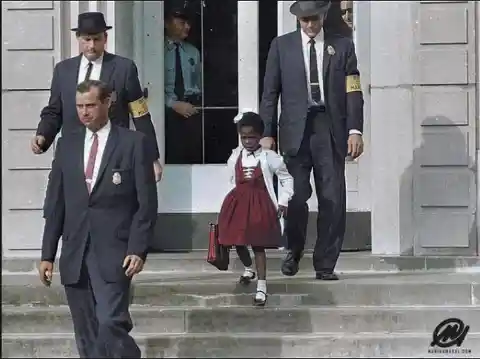
This picture marks the beginning of the end to public school segregation in the US, depicting a young Ruby Bridges guarded by federal marshals outside the William Frantz Elementary School. It didn’t make any sense for her to enroll in other schools because William Frantz was mere blocks away from where she lived in New Orleans.
Sadly, her acceptance into the institution angered white parents, and her family received many threats. She was one of the youngest civil rights movement members at a critical time in history.
Elizabeth Taylor, 1956
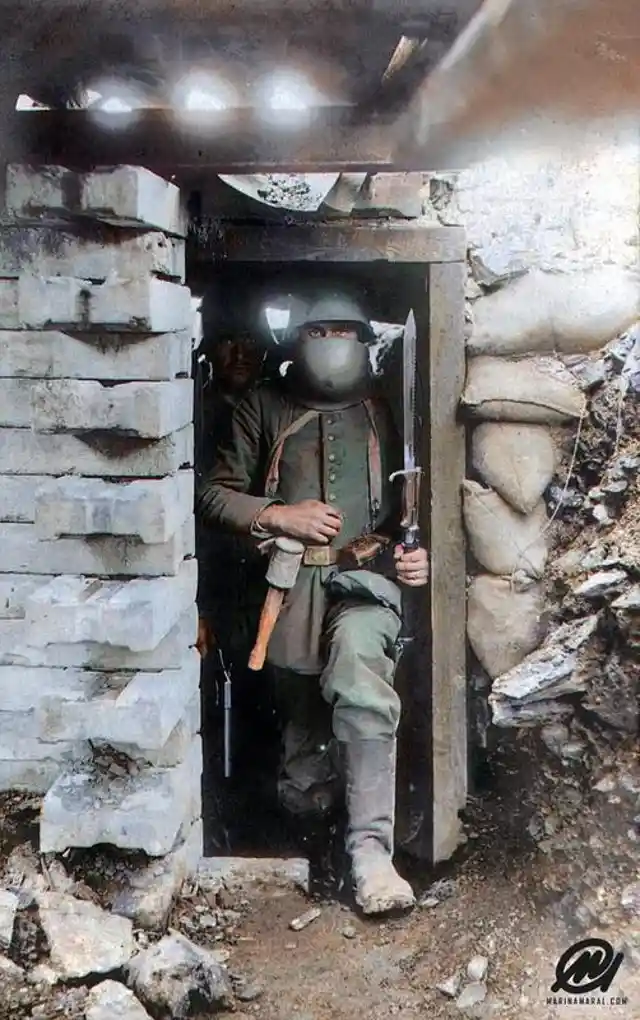
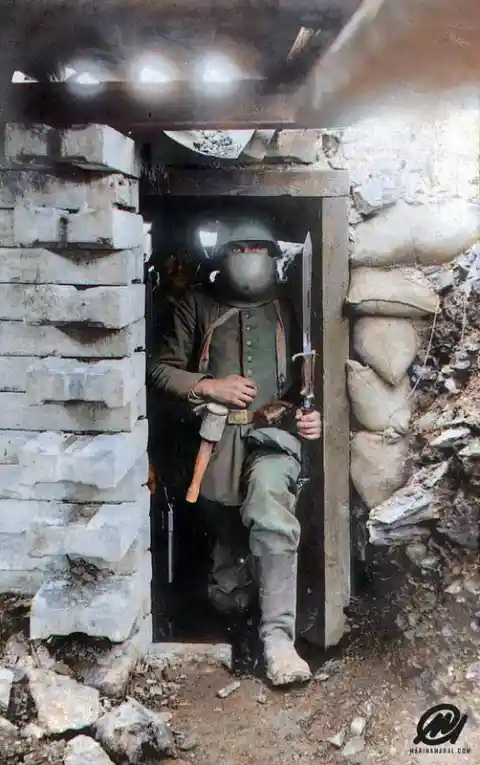
A German soldier poses for a photograph with all his gear in hand. There were many dugouts like this, where soldiers worked for days on end to establish and hold their ground. Land conflicts were in heavy use during the First World War.
Without these trenches, they would all be sitting ducks for heavy artillery and enemies. Thanks to the dugout network, they were able to move around, strategize, and counter the advances of their opponents. Still, many lost their lives within these partially protected walls. The final trench at the frontline was an area infamously described as “no man’s land.”
Fisherman With a Kukui-Nut Torch
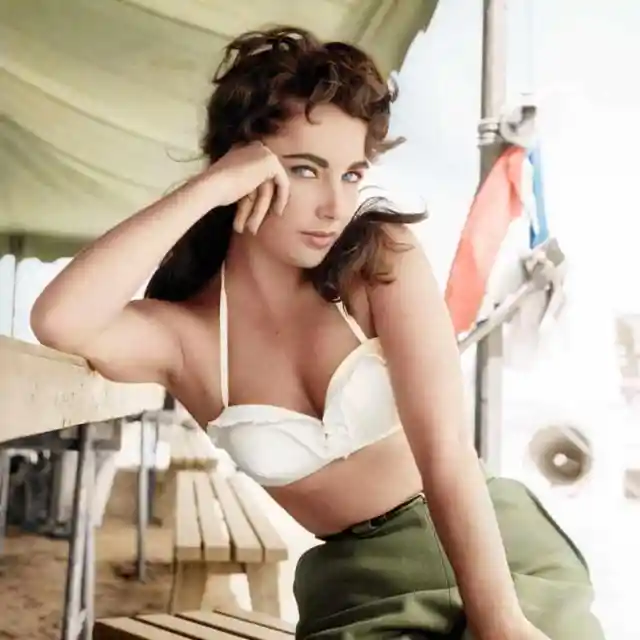
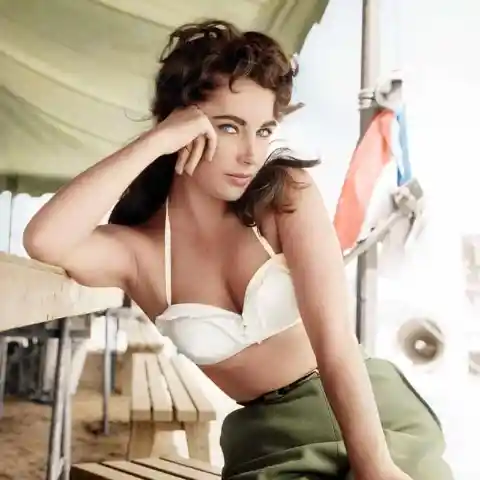
This photo was snapped on the set of the drama film Giant in 1956. Elizabeth Taylor generously posed as if it were a side hustle, her bright blue eyes piercing the lens. Her beauty was so profound that many men wanted to marry her – tycoons, actors, socialites – and she did settle down and marry… eight times (two of which were to the same man).
When asked if she watched her old films, Taylor once said that she didn’t even watch her new ones. However, she loved James Dean and Rock Hudson, her co-stars in Giant. Jimmy, as she knew him, sadly died in a car accident before the movie was released.
Charlie Chaplin and Albert Einstein Attending the City Lights Movie Premier
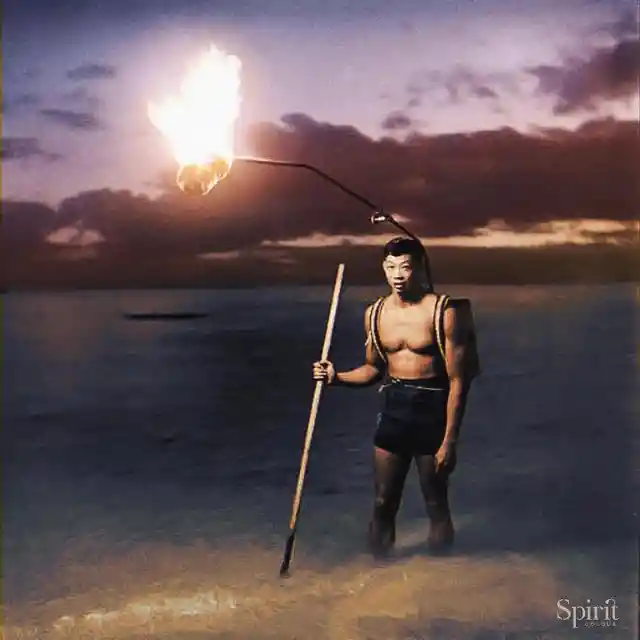
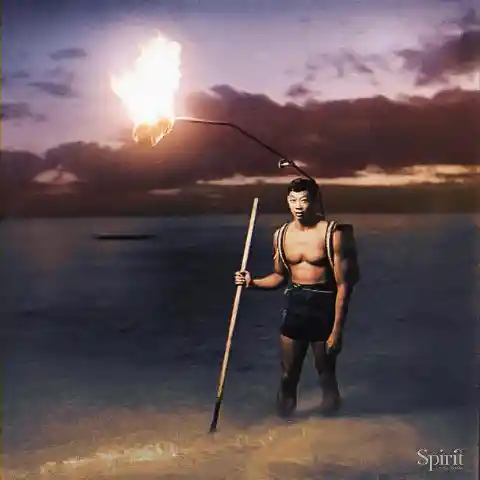
A fisherman in Hawaii is halted for a shot, with his torch overhead as a natural source of light. Every coastal district in the country is given access to shorelines for fishing, and many of them craft their hunting tools out of uhiuhi or kauila trees, which can yield spears up to six or seven feet long.
The overhead torch is made of wrapped coconut leaves. This fascinating torch design helps fishermen find their footing along the reef while also attracting fish to come closer, making them easier to catch.
Taking It Easy at Adolf Hitler’s Home, 1945

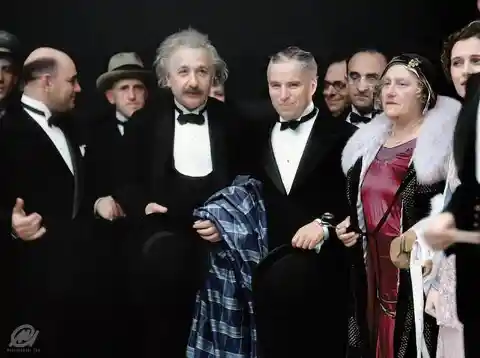
Albert Einstein may be one of the greatest physicists the world has ever known, but he wasn’t the stereotypical standoffish man of science. He actually had a great sense of humor. He was also an artist who longed to meet silent movie actor Charlie Chaplin. Finally, Carl Laemmle formally introduced them.
Einstein often visited the Chaplin residence for good conversation. This is a photograph of both legends attending the premiere of the film City Lights, which Chaplin wrote, directed, and starred in. This was a legendary moment indeed, captured in 1931.
Desert Warrior Colonel Thomas Edward Lawrence
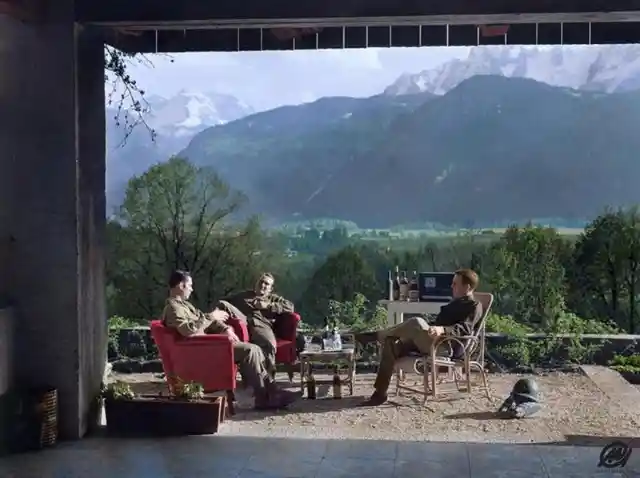
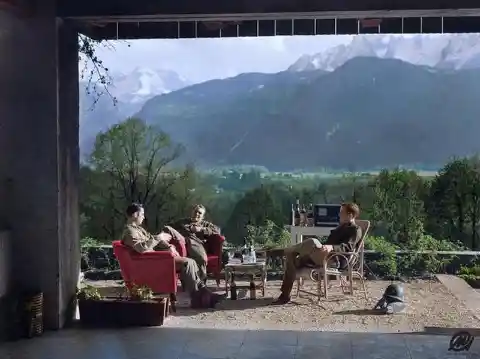
Notorious Nazi leader Adolf Hitler had a soft side that only those closest to him had a chance to witness. Contrary to his contemptible public demeanor, made very clear since the start of his reign in 1933, he loved art and architecture. He decorated his homes himself, and he loved to make them airy and bright. They had large lawns where he trained his pups and spent time with the children in his family.
This picture shows some soldiers from Easy Company enjoying the views while drinking Hitler’s wine in one of his homes in the Bavarian Alps. After raiding the place on April 25, 1945, the paratroopers took the time to relax, basking under the sun, unable to deny the uncomfortable fact that Hitler had good taste.
Action from 1944


When the first global conflict broke out, Thomas Edward Lawrence volunteered to join the British military and was assigned to Egypt. He supported and became a valuable part of the Great Arab Revolt, where the Arab forces aimed to topple the iron grip of the Ottoman Empire in the hope of establishing an independent and unified Arab state.
Col. Lawrence helped the Arab rebels and their allies as a demolition expert. He destroyed railways and bridges and took part in strategic events. He was known as Lawrence of Arabia, and Peter O’Toole portrayed him in the epic film of the same name.
The World’s Smallest Man and His Cat, 1956

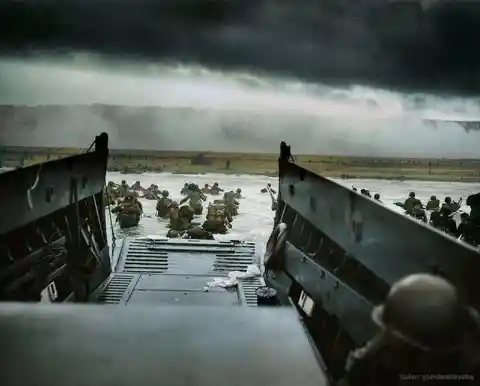
Allied soldiers wade ashore on D-Day – the 6th of June, 1944 – on the Normandy coast, commencing Operation Overlord with airborne and amphibious attacks to free Western Europe from German occupation. American, Canadian, Australian, and English soldiers stormed the beaches under a leaden sky, too gloomy to be colorized.
Many of them didn’t know which direction to take or where their chosen path would lead them, apart from the omnipresence of death. Many of them were just kids, some straight from high school, marching forward in the din to meet their fate.
Carl Akeley After a Leopard Incident in 1896
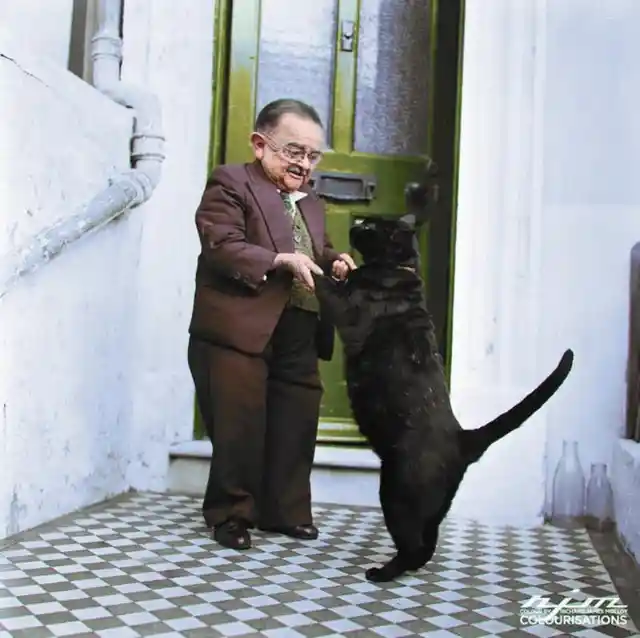

The smallest man in the world in 1956 was a man named Henry Behrens, who called himself Colonel Peewee. He was so small (30 inches tall) that the cat he was dancing with outside his home in Worthing seems to be just the right size for a waltz!
Behrens was married to the world’s smallest woman, and to make a living, they often traveled with other people of smaller stature in their work for Burton Lester. The couple didn’t mind people staring at them. Nor did they mind being small. Behrens, in particular, loved the spotlight.
Detained Japanese-American Teens
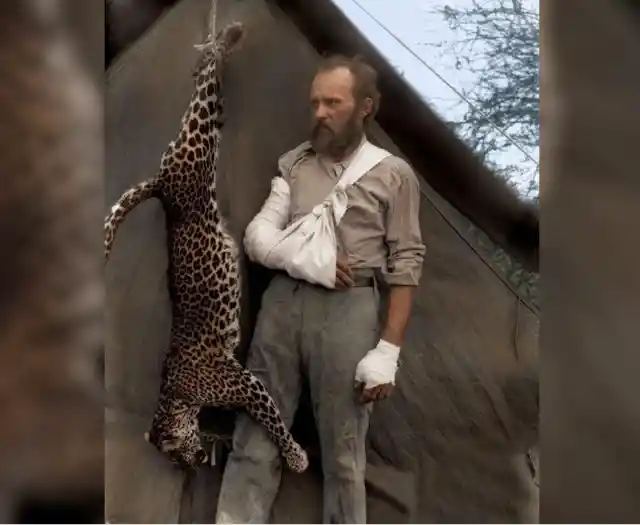
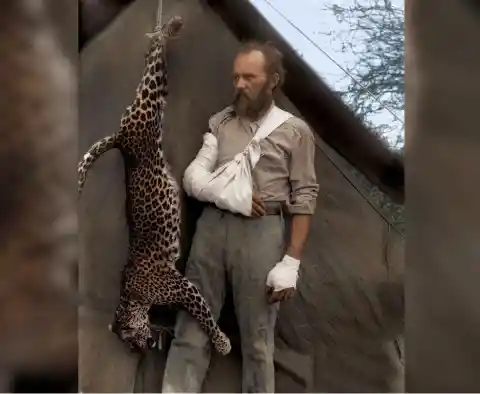
Carl Akeley spent many months in Africa as a pioneer taxidermist and naturalist. It was during his long travels to the continent that he learned more than just the art of animal body preservation. Beyond taxidermy, he became an all-rounder and a veterinary explorer.
It was also in Africa – during an expedition to Somaliland that lasted for eight months – that he accidentally came face to face with a leopard in the woods. This led to a one-on-one battle between Akeley and the large predator, which he barely survived.
1929 Conclusion of the Stock Market Crash

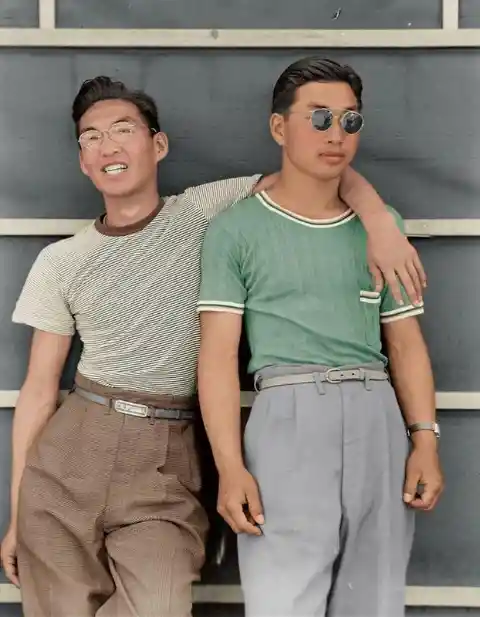
After Pearl Harbor on December 7, 1941, US authorities on the mainland scrambled to relocate all Japanese-Americans to internment centers. Families were separated because of this move, housed in multiple apartments, regardless of whether they had anything to do with the infamous day or not.
Rounded up, students were told they wouldn’t be receiving their diplomas. They were placed in bare rooms with no divisions, drawers, or curtains. All they had were spring beds and windows. They were innocent but living in prison-like conditions because people they had nothing to do with carried out an attack on Pearl Harbor.
VP Lyndon B. Johnson Sworn-in Aboard Air Force One
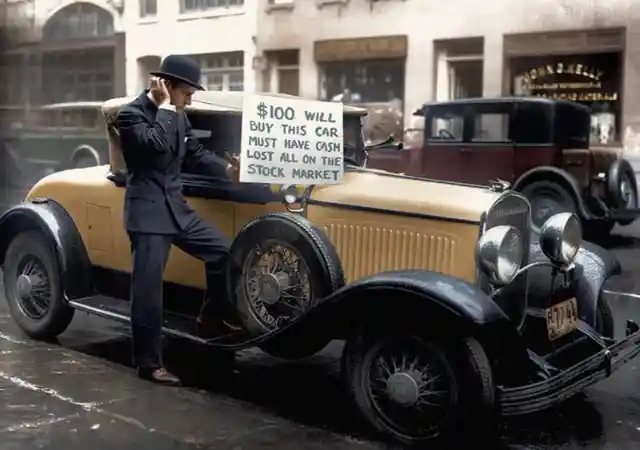
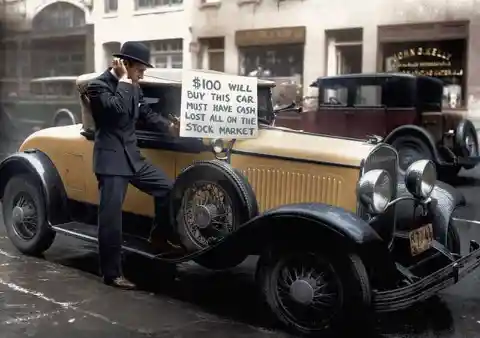
Here, we see a picture of great financial loss and desperation. This was the aura that pervaded American cities at the end of the sixth day at the New York Stock Exchange, the 29th of October 1929, infamously known as Black Tuesday. This major crash led to a whirlwind of events and chaos as investment bankers scurried to save the troubled market.
They traded close to sixteen million shares but still lost thousands of investors, losing money in the billions in one day. The wildest dreams of the roaring twenties came tumbling down, pushing the country closer to the Great Depression.
Bean Harvester Thomas Cave, 1939
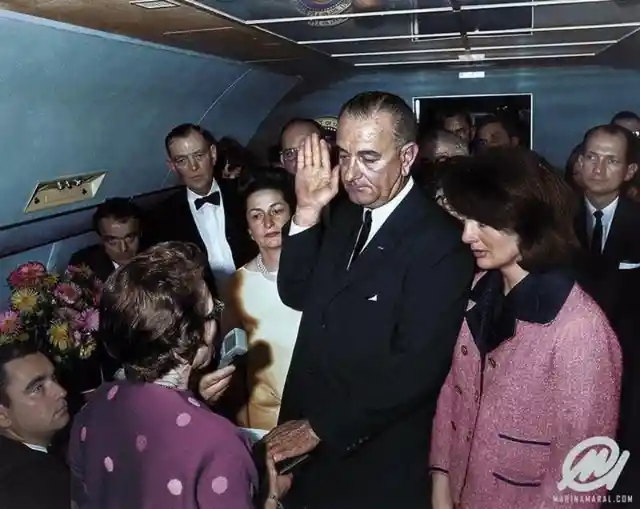
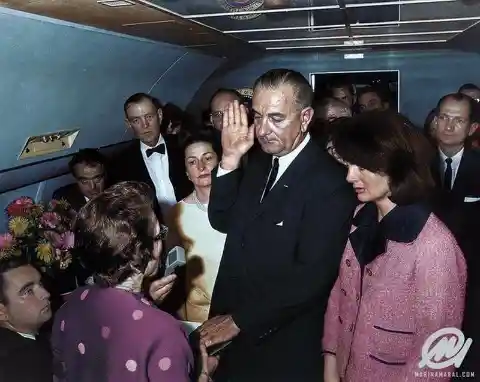
In a day that many call the saddest in American history, barely an hour after John F. Kennedy’s death at a parade in Dallas, Lyndon Johnson takes the oath of office as the mourning nation’s new president.
Jaqueline Kennedy looks on with the same suit she wore when JFK collapsed next to her in the back of the limousine. She is obviously still in a state of shock and confusion. This photo was taken aboard Air Force One as it was parked at the Love Field tarmac in Dallas on November 22, 1963.
A Soldier’s Homecoming
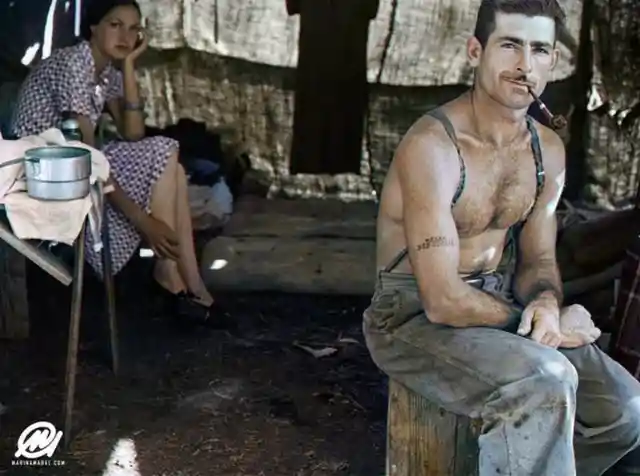
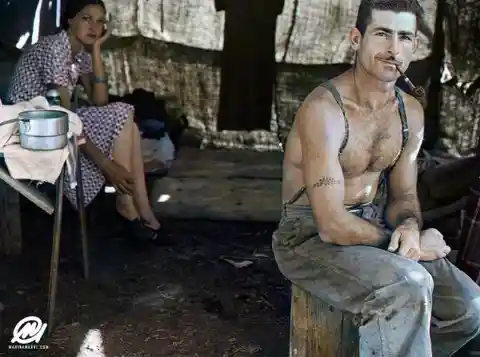
Dorothea Lange found herself drawn to the hardship endured by many Americans during the Great Depression. This was the heart-rending theme for many of her photographs, but her images weren’t all doom and gloom. The photo below shows a temporary bean harvester with his wife.
From the Social Security number tattooed on his arm, the man was identified as Thomas Cave, who hailed from Klamath Falls, Oregon. The couple had been moving from farm to farm, harvest to harvest to make ends meet. After working for almost a year without rest, the couple found themselves jobless. Still, you can see hope and pride on Cave’s face.
JFK and Jacqueline Bouvier at the Kennedy Home, 1953
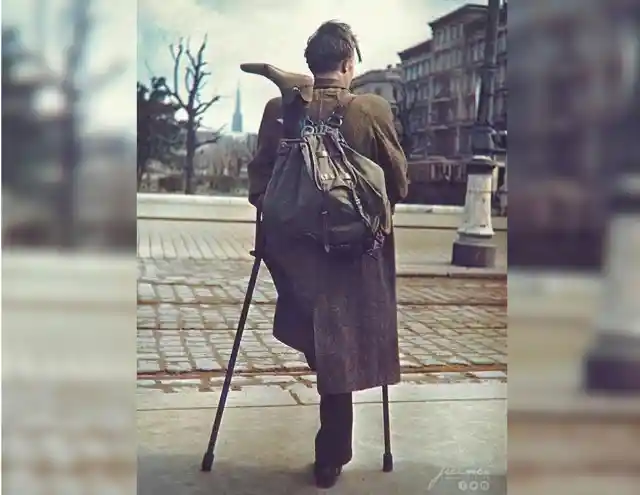

At the end of the second global war, Ernst Haas felt swayed by the drama of the soldiers’ emotional return home and tried to capture these moments through his photography. This picture caught nationwide attention and put Haas in the spotlight. He received many job offers afterward, including one from Life magazine. However, he preferred to remain freelance so he could pursue his own ideas.
The photo frames the soldier’s uncertainty of rejoining society, knowing it’s no longer as it used to be, with thousands now gone and a few still carrying the scars of their time overseas. How could he reintegrate after having spent so much time in the grip of tragedy?
Captured German Boy, 1945

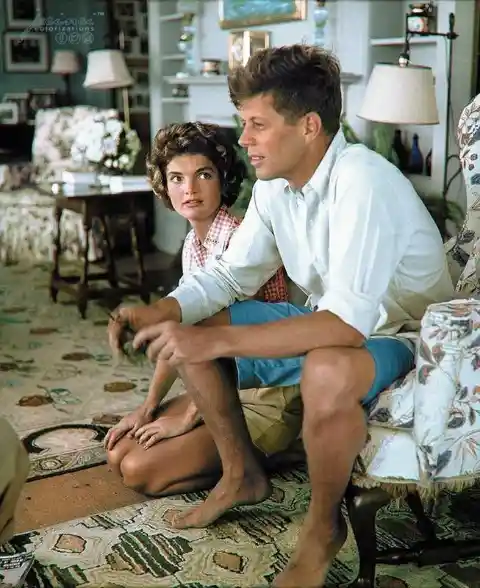
Some rumors suggest that, when he was still a senator, John F. Kennedy proposed to Jacqueline over the phone. Others claimed the proposal happened in Georgetown at Martin’s Tavern. Either way, the pair traveled soon after to the Kennedy family home in Hyannis Port on Cape Cod.
A Life magazine photographer went along with them to create their engagement collection. The photographer snapped this picture of Jackie’s enchanted gaze. She commented years later that her husband was magic to her, and perhaps, too beautiful for this world. This picture captured what she truly felt for him.
Covering the Ruins in Poland After the 1940s
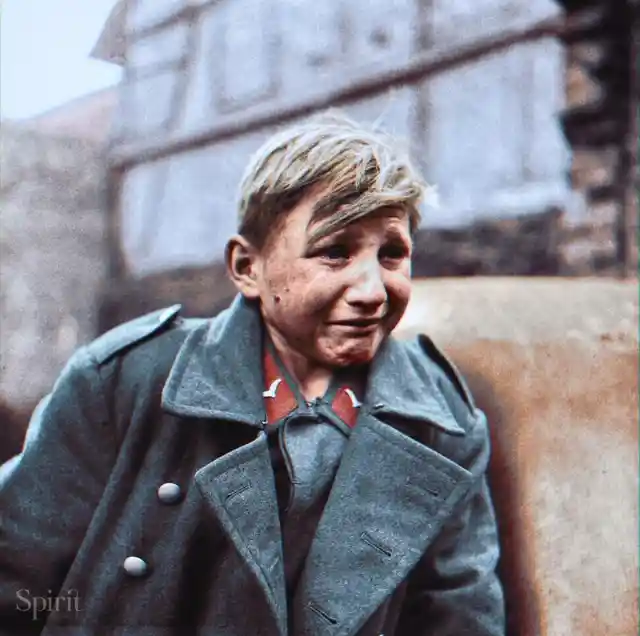

The story of Hans-Georg Henke, a sixteen-year-old German boy soldier captured by the Allied members on the 3rd of April 1945, reflects the evils of this time. His story reveals the hideous path the German army took during the 1940s by recruiting boys to fill out their numbers.
He lost his parents when he was fifteen and joined the Luftwaffe, seeing it as the only way he could feed his family. The harshness of this conflict took away this boy’s innocence. The shock of the situation, coupled with the uncertainty of his future as a captive, causes him to break down.
21-Year-Old Winston Churchill, 1895
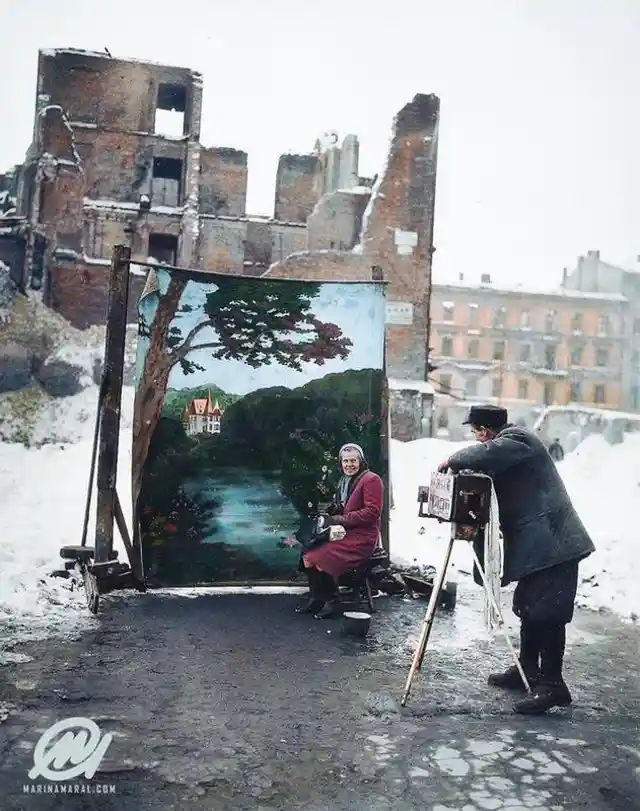
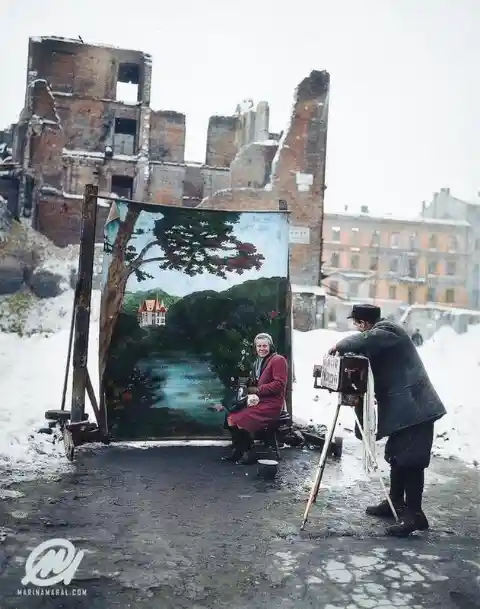
Poland suffered extensive damage in the aftermath of the Second World War, especially during its final stages when the retreating German forces were pursued by the Soviet Red Army. In some areas, infrastructure was left in ruins.
Those who survived, like this lady in the photograph, wanted desperately for their lives to be normal again. It was hard with all the destruction in view – homes and landmarks turned to rubble. They tried to get over it as best they could, even using backdrops reminiscent of the good times when having their portraits taken.
The Great Scientist – Albert Einstein
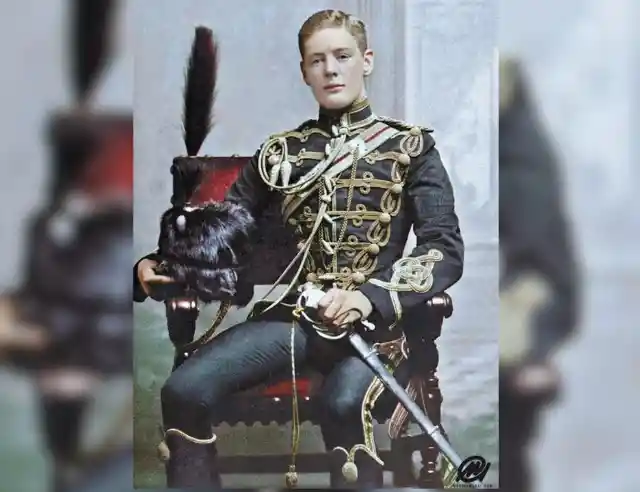

This is a rare photograph of Winston Churchill. Taken in 1895, it stands in contrast to most snapshots of him at the height of his leadership as prime minister, amidst the chaos and grim experience that surrounded the second global conflict.
Churchill had just graduated from the Royal Military Academy and become a member of the Queen’s Hussars Cavalry. This was a time he remembered fondly, mostly because of all the friends he made, especially during his seven months of training.
Fashionable Hitchhikers of the ‘60s and ‘70s


The German-born physicist has become synonymous with the word “genius” thanks to his contributions to the field of science, not the least of which involved authoring the world’s most famous equation. His body of work is still influential.
Einstein could sit down with anyone and talk about a wide array of other things, from his passion for music to his political view and even just general banter. The man was happy to talk about anything under the sun. He loved art very much and dared to say that “imagination is more important than knowledge.”
Allied Forces Liberate Paris – August 25, 1944
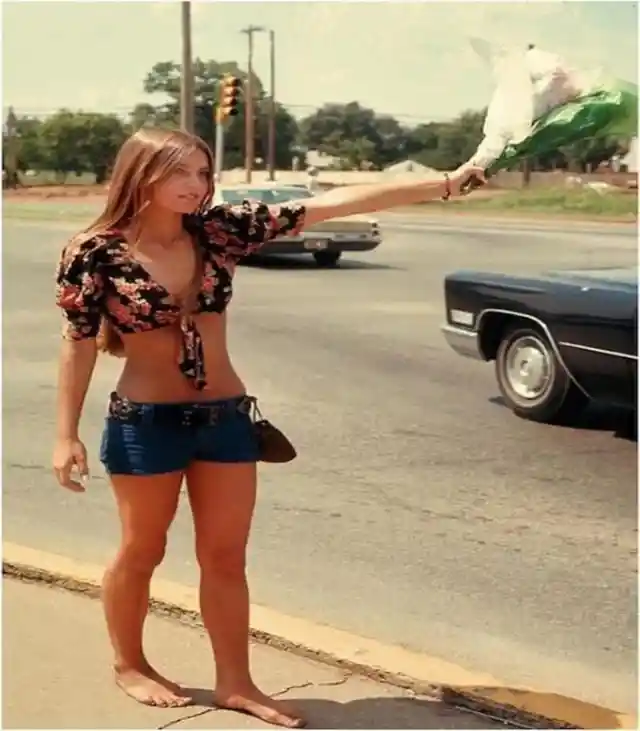
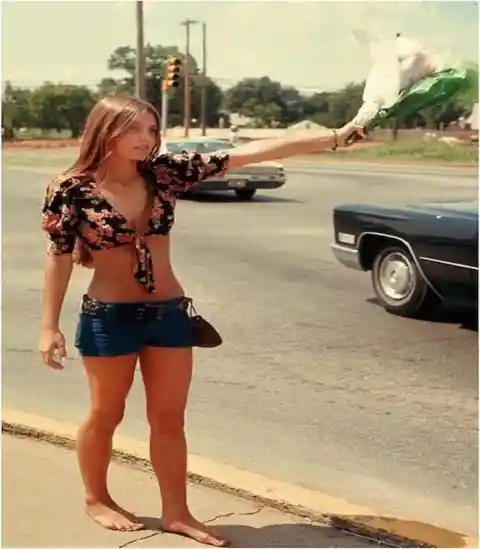
In some places, hitchhiking has been banned for safety reasons. Yet up to this day, travelers are occasionally seen along highways across the country signaling for a ride, typically with their backs facing the direction they wish to go, arms outstretched, and thumbs pointed to the sky.
Hitchhiking was most popular during the ‘60s and ‘70s, especially among the young and adventurous who didn’t mind hopping in a stranger’s car on the road to nowhere. Needless to say, the most attractive among them got to their destination with less delay.
27-Year-Old Charlie Chaplin
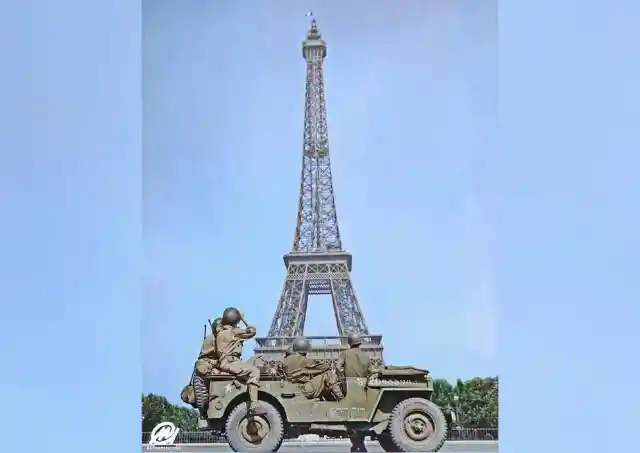
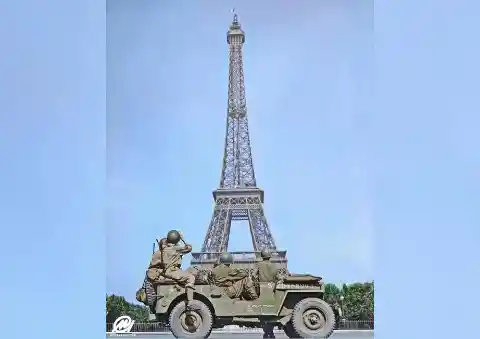
Dwight Eisenhower abandoned his original plan of circumventing the liberation of Paris in favor of more vital operations, making it his top priority after his meeting with General Charles de Gaulle.
While the Germans were preoccupied with the French Resistance in Paris, Eisenhower went to the South with the 4th Infantry Division and forces from the 2nd Armored Division coming from the North. Hitler ordered his commander on the ground to reduce the city into ashes, but General Dietrich von Choltitz ignored this order and surrendered to the Allied Forces with minimal resistance.
A Seasonal Worker Migrating with His Son to California
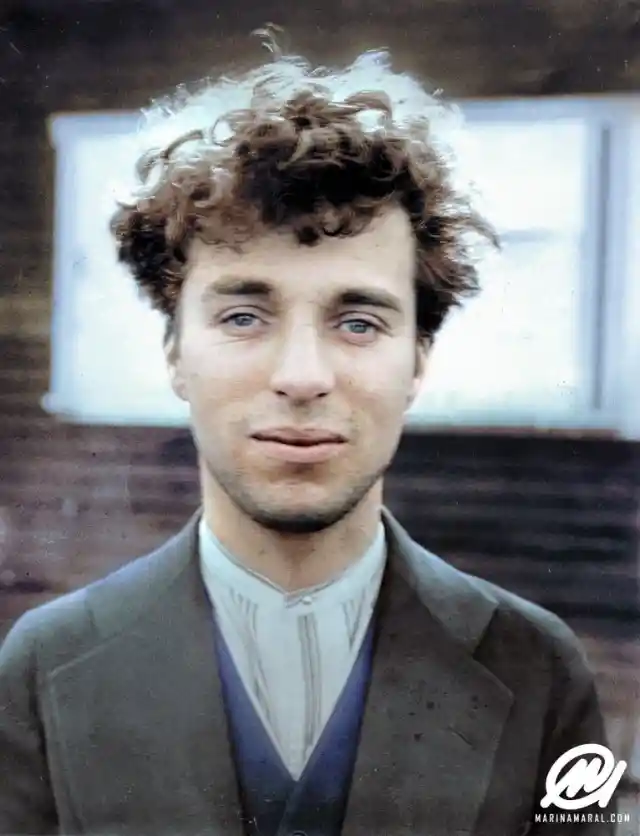
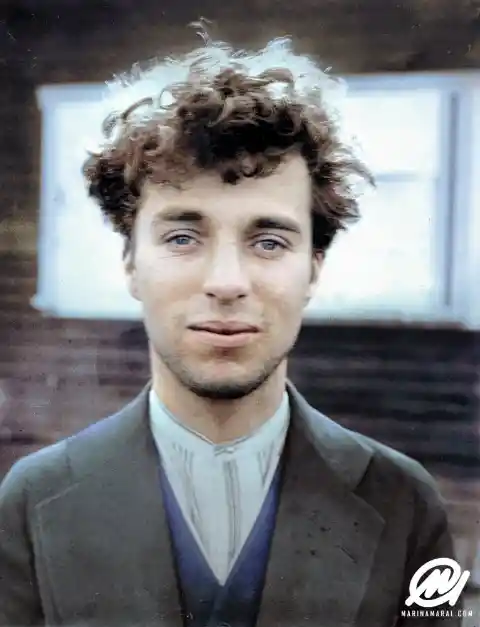
Young Charlie Chaplin ventured into acting before the age of ten. His mother believed in his innate talent, and his father’s death meant that the family needed help to get by. With his mother struggling mentally, Charlie and his brother Sydney took over as heads of the household.
Charlie became famous for his “Little Tramp” on-screen persona. In his imagination, this was his dad’s alter-ego, set free from within – a child who refused to grow up and had a disdain for the changing world.
Jungle Pam
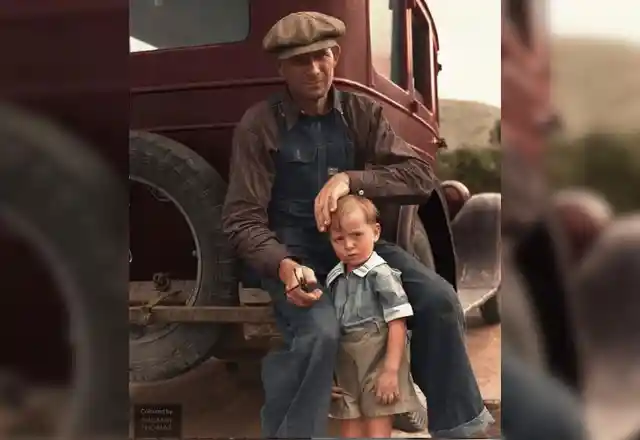
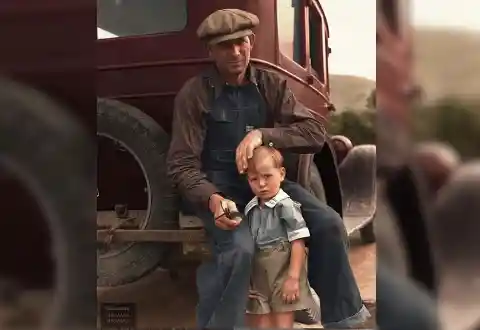
In the 1930s, a severe change in regional climate caused droughts and dust storms in the Southern Plains. To make things worse, new federal land policies and poor farm economics cost many people their jobs, forcing them to migrate to other places to earn a living.
This Dust Bowl migration (of around half a million people) was given a suspicious eye by Californians who felt these migrants were out to steal their jobs. They weren’t entirely wrong. These seasonal workers would scramble for all kinds of work, primarily as crop hands and often for very little money.
Women in the Workforce

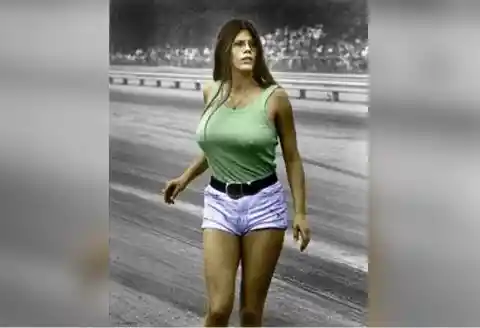
When Jim Liberman saw Pamela Hardy (who later on became known as “Jungle Pam”) for the first time, he knew that she was the perfect counterpart and embodiment of his personality as a showman and funny drag racer on the tracks. He immediately hired her as his sidekick, so she could do her best to upstage him and his car at events.
Jungle Pam knew nothing much about cars but later on learned not just to present the vehicle but fill it up with oil and pack it with parachutes. She made Liberman and the sport itself more popular, thanks to her incredible stature and skimpy outfits.
Bergen-Belsen Concentration Camp Liberated by the Red Army
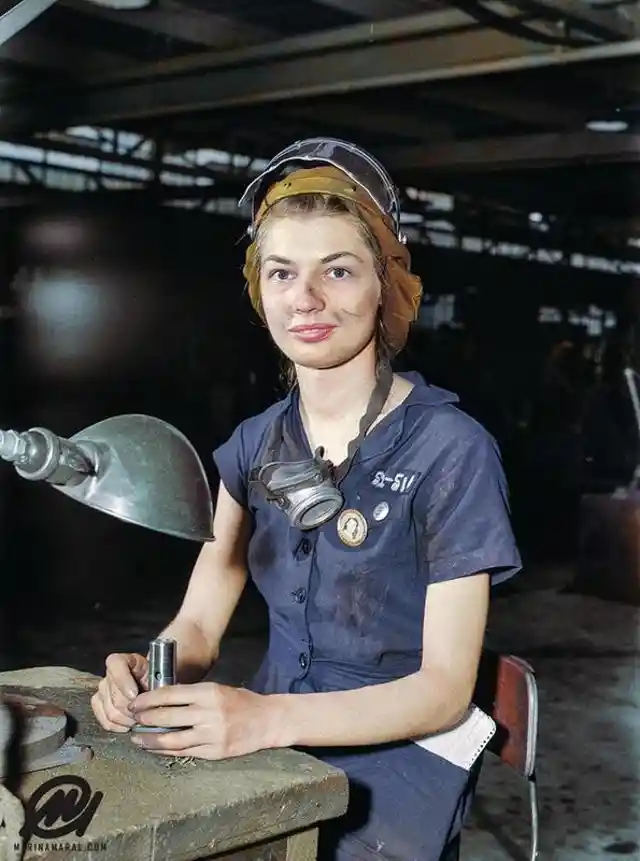
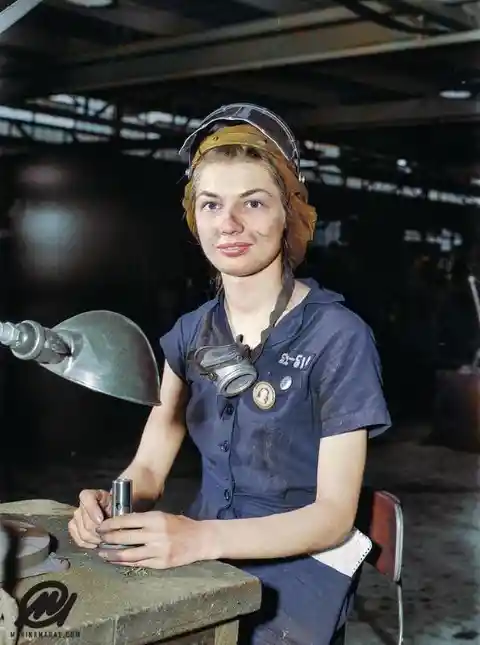
Many jobs were vacated in the American mainland during the 1940s after thousands of men were shipped overseas to join in the effort against the Axis Powers. To keep the economy moving, many women took over for their male counterparts, driving trucks, operating assembly lines, and handling munitions production. These jobs were all critical to winning the conflict.
Ms. E. Hancock was only 21 years old when this picture was taken. She worked in an aircraft plant in the Midwest. Despite having no motor-related job experience, the former store employee was able to master the technicalities of her job quickly.
Pablo Picasso Showing Off His New Revolver
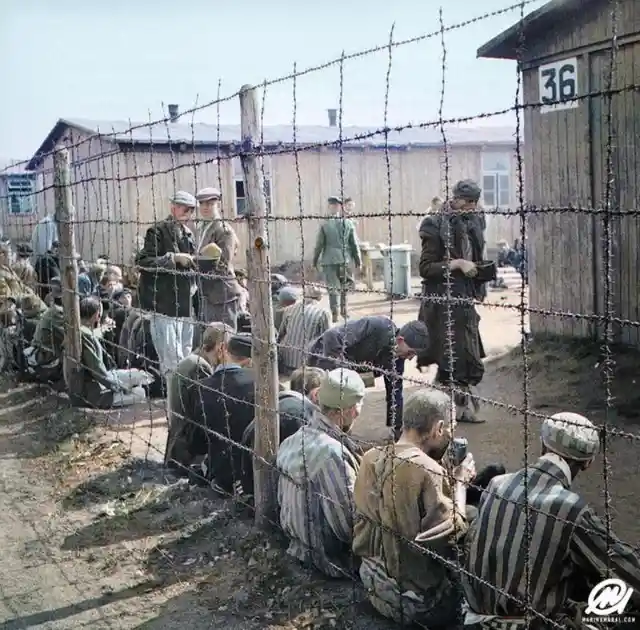
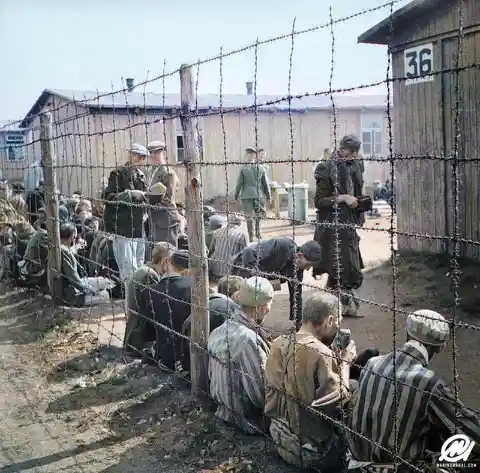
This site was originally installed as an exchange camp where German POWs were swapped for Jews who were being held hostage. Sadly, its purpose shifted and it eventually became the largest concentration camp. Wary of the coming retaliation for their crimes, the Nazis fled when the end of the global conflict seemed imminent.
When the Soviet forces arrived on January 27, 1945, all they saw at first were signs of desolation. Abandoned eyeglasses, pans, shoes, and rags seemed to be the only occupants of the place. Then the prisoners came rushing towards them, some dropping on their knees to embrace their liberators’ legs.
John F. Kennedy and Jacqueline Bouvier’s Wedding Celebration
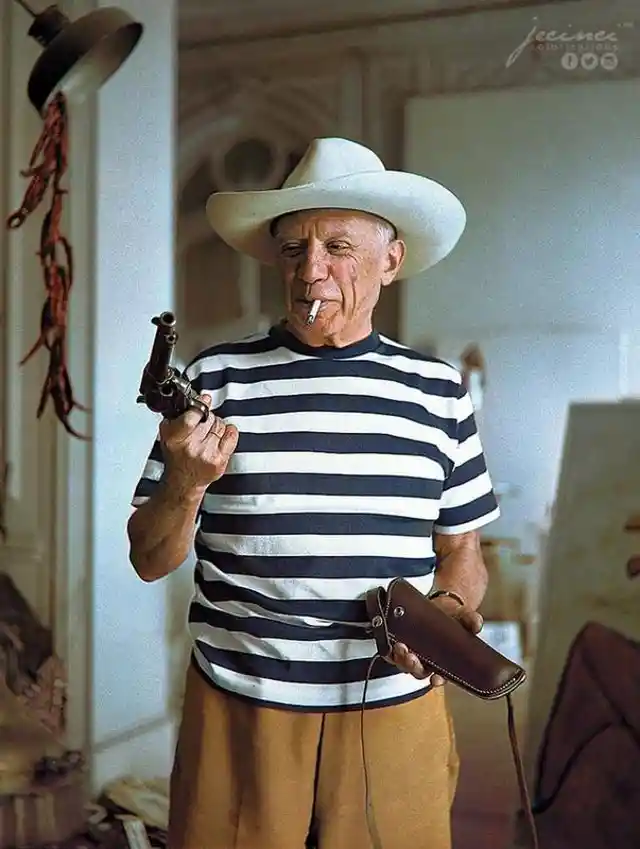
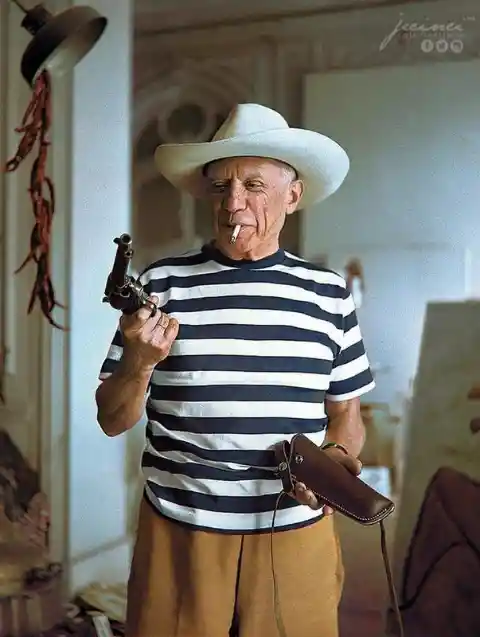
Pablo Picasso had many artistic talents, first focusing on naturalistic paintings as an adolescent and later experimenting with various techniques, theories, and ideas. He also managed to have a fruitful social life beyond his professional work, especially when he lived in Paris.
Picasso had many famous friends, including writers Gertrude Stein and Alfred Jarry. He also became good friends with American actor Gary Cooper, who gifted him the revolver. This photograph of a very chuffed Picasso was taken in 1958.
Young German Anti-Nazi Activist Sophie Scholl
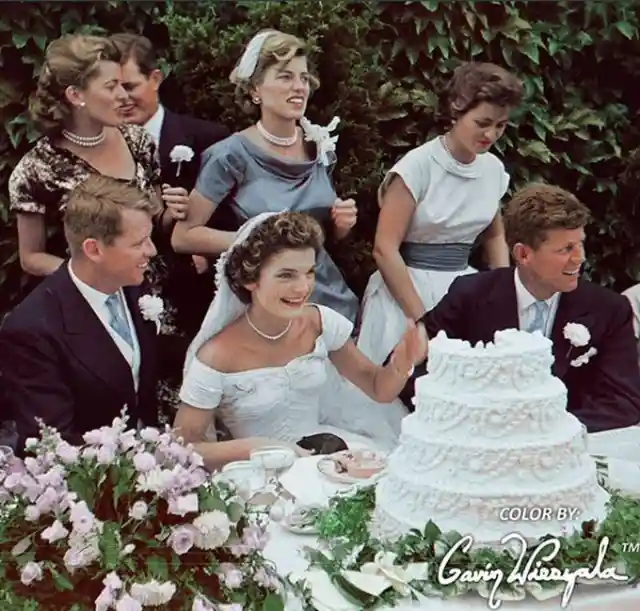
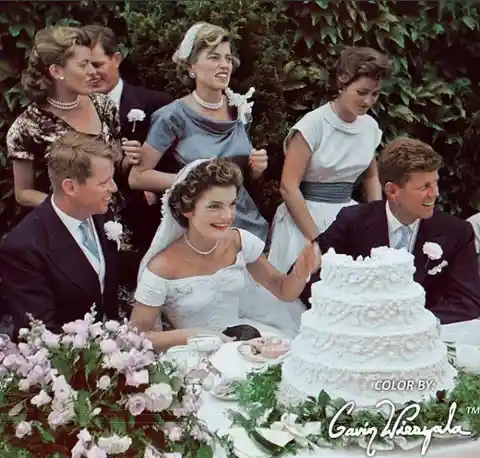
The 12th of September 1953 marked the marriage ceremony of Jacqueline Bouvier to Senator John Kennedy. It took place in Newport, Rhode Island, on a bright and sunny day. As expected, the service was a dreamy event that seemed to have been lifted from the pages of a fairytale.
It was attended by the nation’s most important people, including many diplomats and senators. The newlyweds welcomed more than a thousand guests into the reception area at the idyllic Hammersmith Farm, reminiscent of Camelot.
A Popeye Look-Alike Sailor on the HMS Rodney
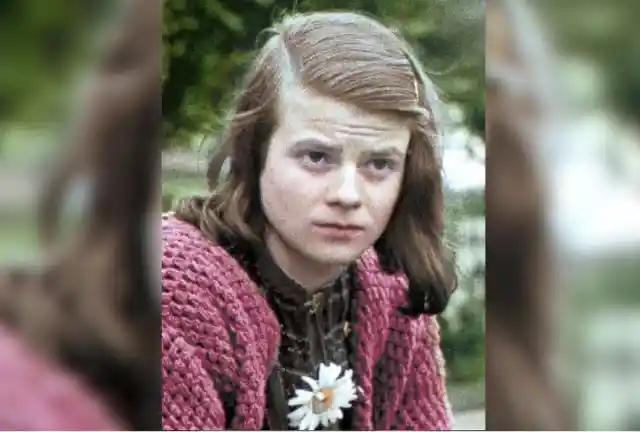

Entire nations were scared to stand up against Adolf Hitler, who bullied Germany’s neighbors and terrorized his own people after becoming chancellor of Germany in 1933. He ruled with an iron hand through the establishment of the Enabling Act, but German student Sophie Scholl was having none of it.
She stood up against the man and was eventually tried and convicted of treason following her arrest at the (LMU) University of Munich for distributing anti-war pamphlets. She met her end via guillotine in 1943 – a day she described as fine and sunny, without fear.
American Infantrymen on Their Way to Omaha Beach, 1944
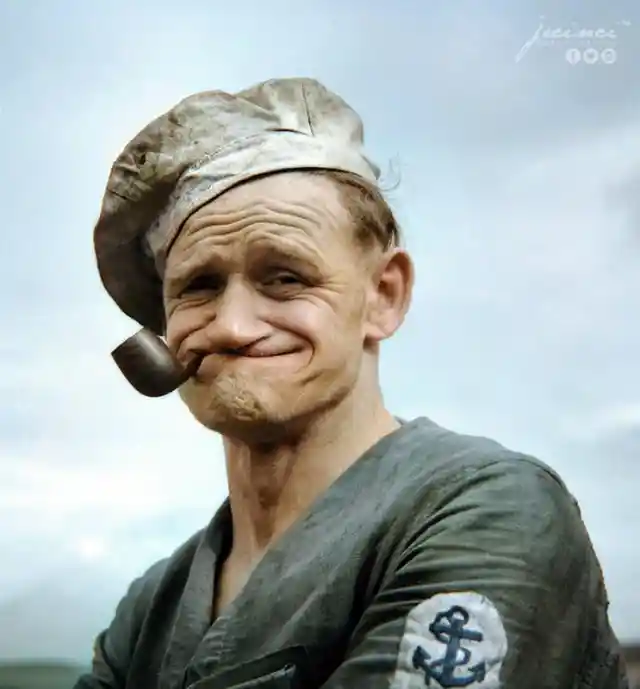
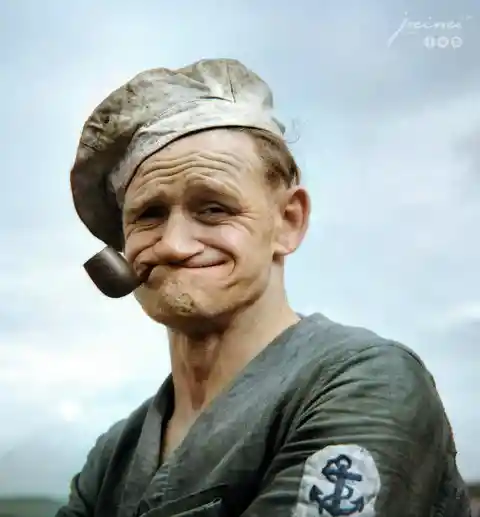
This 21-year veteran of the seas was a sailor on the HMS Rodney. He also appears to be the real-life equivalent of the famous cartoon character Popeye, who often fought Bluto for Olive’s affection. He has that familiar facial structure and even sports an identical pipe.
The real inspiration for Popeye the Sailorman was a bartender and manual laborer. Frank ‘Rocky’ Fiegel lived in Chester, Illinois – the hometown of Popeye’s creator E.C. Segar. Like the cartoon, Fiegel was predisposed to getting into trouble. The picture above was taken in 1940 – 11 years after Popeye was created.
Sophia Loren and Jayne Mansfield – the Infamous Shade-Throwing of 1957
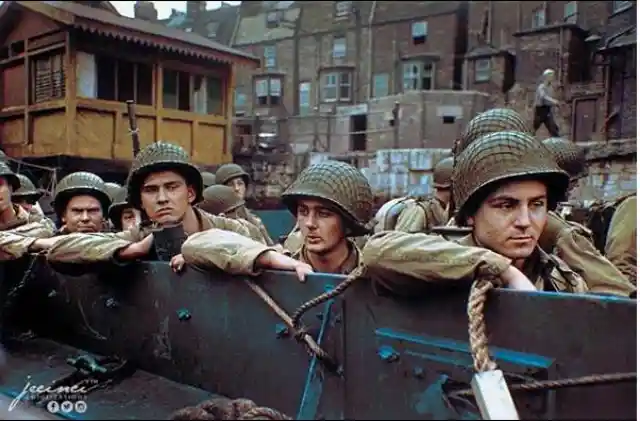
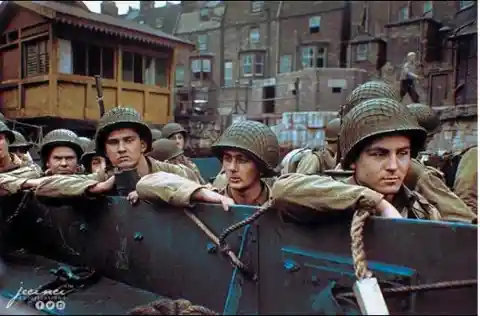
Before the conflict, these infantrymen lived at home with their loved ones. Many were students, while some worked in local businesses. Nothing could have prepared them for the Normandy Landings in 1944.
After a day’s delay due to bad weather, they finally found themselves lining up for the amphibious invasion. These lads were sent to Omaha Beach for the liberation of France and the whole of Western Europe. More than 425,000 Allied Forces and German soldiers lost their lives after almost a month of Operation Overlord.
A Flamboyantly Dressed Oscar Wilde, 1882
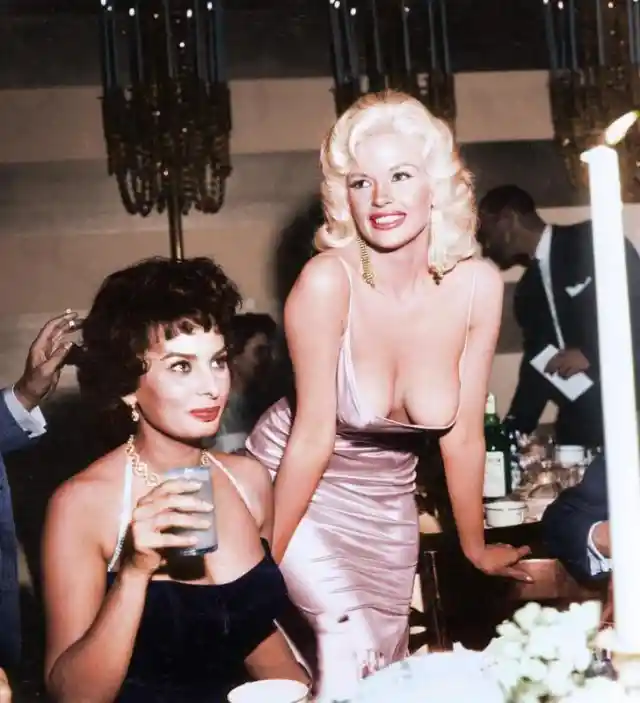
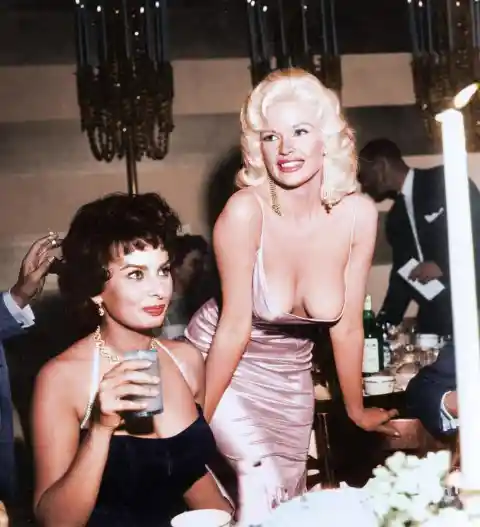
After making it big in Europe, actress Sophia Loren finally landed in Hollywood. This infamous photograph was taken during her welcome party hosted by Paramount Pictures at a famous restaurant in Beverly Hills. The night was designed to celebrate the Italian actress, confirming that she was ready for bigger things to come – until Jayne Mansfield strutted in late to the party to pose by her side, with a big smile and other notable assets on display.
This pose distracted the attention from Loren that night, who later on admitted to having been captivated by Mansfield herself. Loren was classy from start to finish – she truly is a star, and she only grows more beautiful with age.
The Multi-Faceted Mata Hari
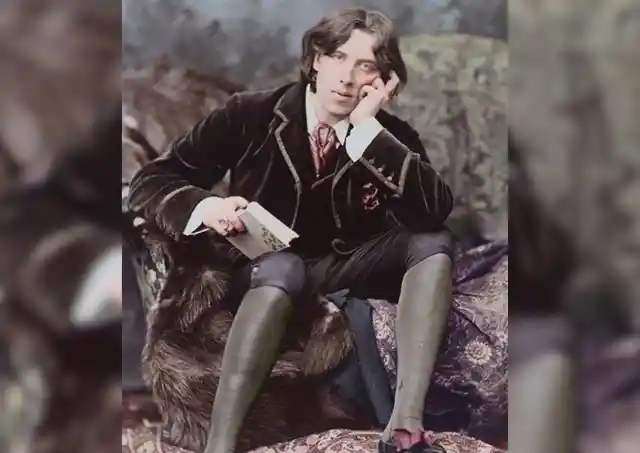
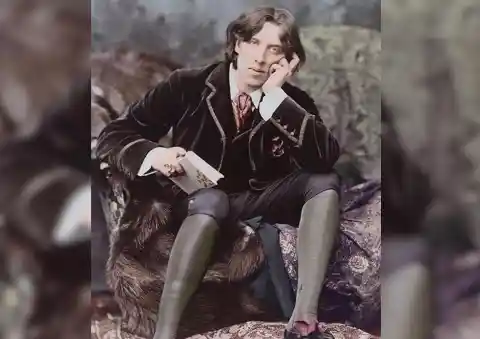
As an exponent of aestheticism in art, Irish poet Oscar Wilde used to travel regularly to talk about the “English Renaissance,” as well interior design (another of his passions). He was known for his novel The Picture of Dorian Gray, which explored the darker side of beauty, decadence, and deceit.
Wilde spoke to large gatherings of people throughout the United States, where he gave around 150 lectures. He was well-received in Colorado, where he stayed overnight and drank among “well-formed” miners, describing them as living poetry.
Members of the Dutch Resistance Celebrate the Liberation of the Netherlands


Margaretha MacLeod was more popularly known by her stage name Mata Hari. She was uncovered as a spy for the Germans. But this was only a single facet of her colorful life, which history shows she lived with thrill and excitement.
She was known to be a courtesan and dancer, but she was also a scapegoat for the military that had a need to create a foe at the time. She was a feminist, a person with a natural instinct for survival, and a woman who carved her own path during difficult times and conflict.
Civil Rights Activist Martin Luther King Jr.
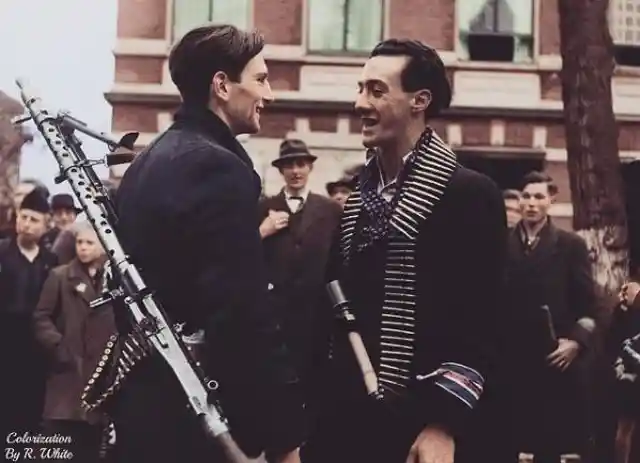
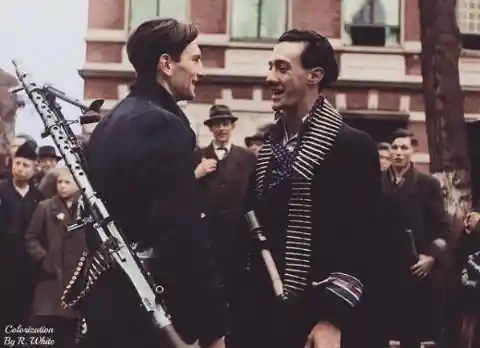
Despite its neutral stance, the Netherlands found itself in the crosshairs of German forces during the 1940s. This was a strategic move for the Axis Powers who wanted to take over France and use the Netherlands as a defense against the British.
There was very little resistance from the Dutch, who gave up after the Rotterdam incident. Most of their contribution to the global effort after their surrender was through non-violent means, such as by conducting counterintelligence for the Allies and providing communications networks.
Native Americans Celebrating Their Culture at the Crow Fair
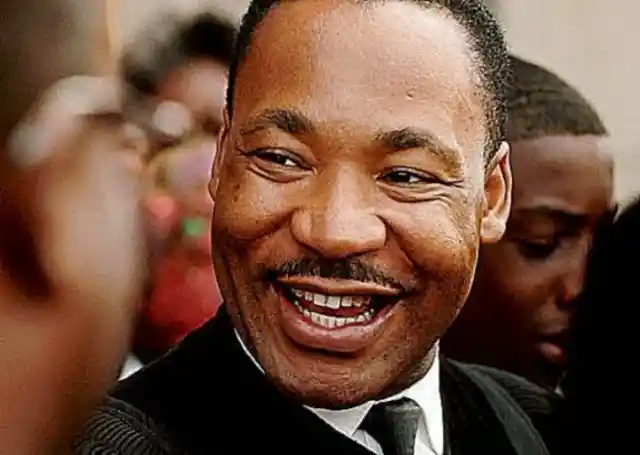
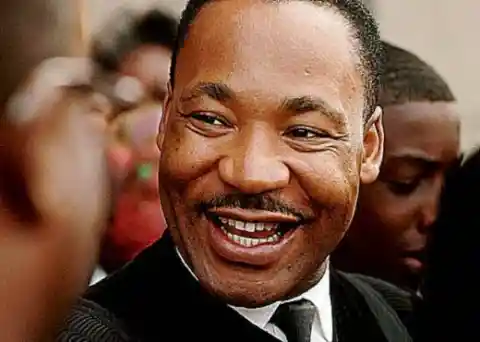
Inspired by Mahatma Gandhi, American activist Martin Luther King Jr. attempted to rid society of racial inequality through peaceful means. He spearheaded movements that promoted peace and loving values, similar to the way Gandhi sought to liberate India from British rule.
A natural spokesman, King often spoke of labor rights, the right to vote, desegregation, and various civil rights talking points. These efforts were his love in action, he said. To love everyone, even one’s enemies, and be willing to actively help them discover themselves – that was his guiding mission.
A Concentration Camp Prisoner
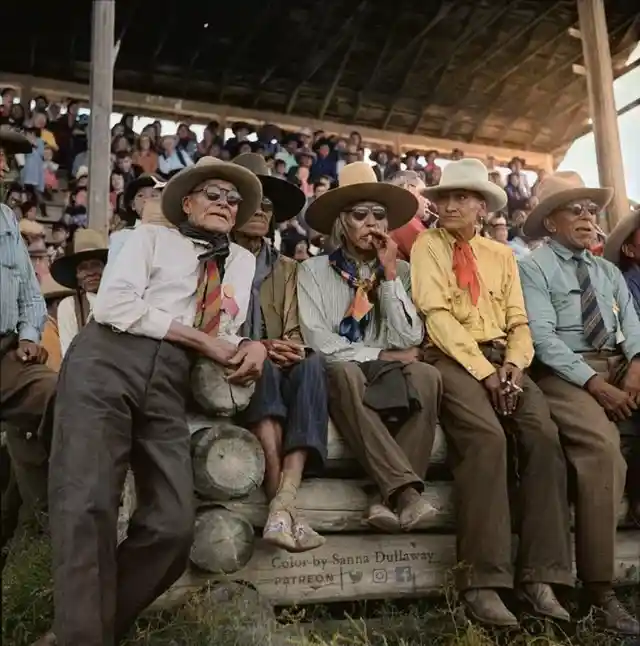
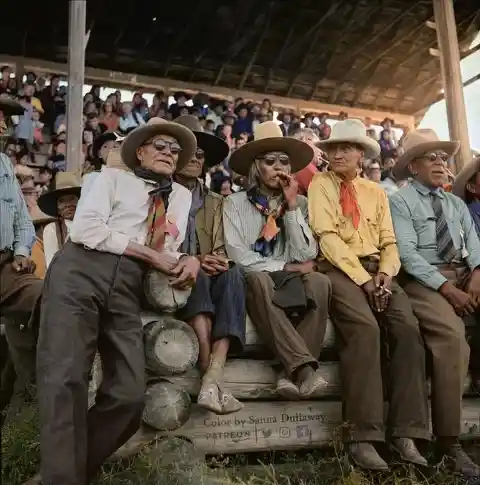
Gathering annually near the Little Bighorn River in Montana, starting each day of the Crow Fair with a colorful parade, various Native American tribes join for a pow-wow to celebrate their culture and traditions. With thousands of participants and spectators, it is a monumental get-together.
In this photo, Crow Native Americans can be seen bonding as they watch cultural dances. This is done as a celebration of freedom and a form of competition. There is plenty of singing and socializing, horse racing, and a daily rodeo.
An Ojibwe Native American Fishes
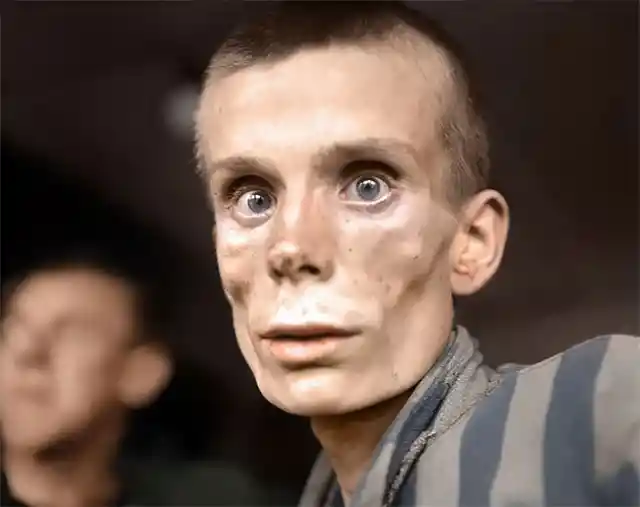
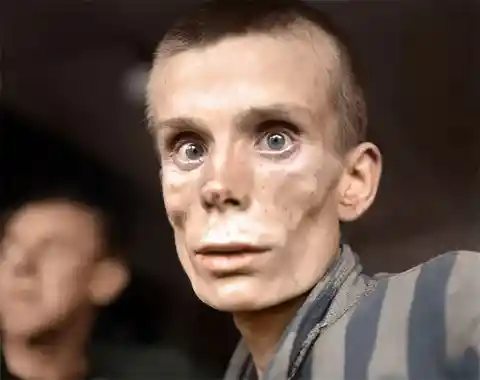
A traumatized 18-year-old Russian prisoner stares into the lens of the camera amidst the liberation of the Dachau concentration camp in 1945. The Dachau concentration camp is located in Dachau, Germany
The Second World War ended in 1945, liberating those lucky enough to survive the atrocities of concentration camps built by Adolf Hitler’s Nazi regime.
Jewish Women and Children Arrive at Auschwitz-Birkenau
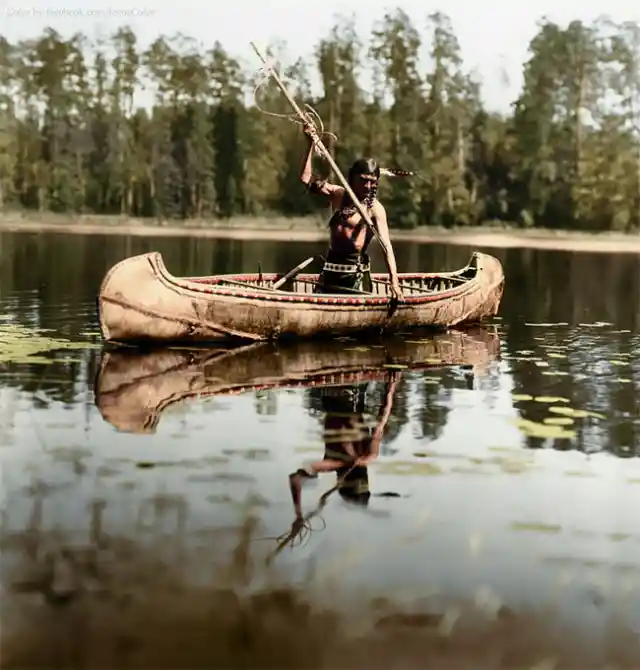

An Ojibwe Native American fish in Minnesota, in the year 1908. They are currently in southern Canada, the northern Midwestern United States, and the Northern Plains. The term “Ojibwe” means “Puckered Moccasin People.”
They were primarily hunters and fishermen due to the cool climate where they lived, which was not suitable for farming.
Audrey Hepburn, 1953
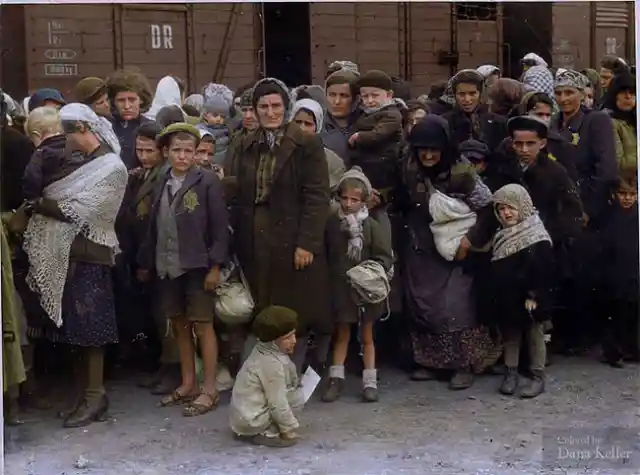
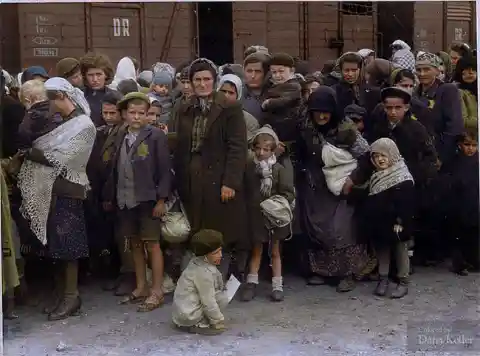
In 1944, persecuted Jewish women and children arrived at the extermination camp, Auschwitz-Birkenau. The camp was located in Poland and was in operation from May 1940 until January 27th, 1945, when it was liberated by the Soviet Union.
Before it was turned into an extermination camp it was used for army barracks. The inmates mainly consisted of Jewish people, Polish people, and Soviet Union prisoners of war.
Coney Island, New York, 1905
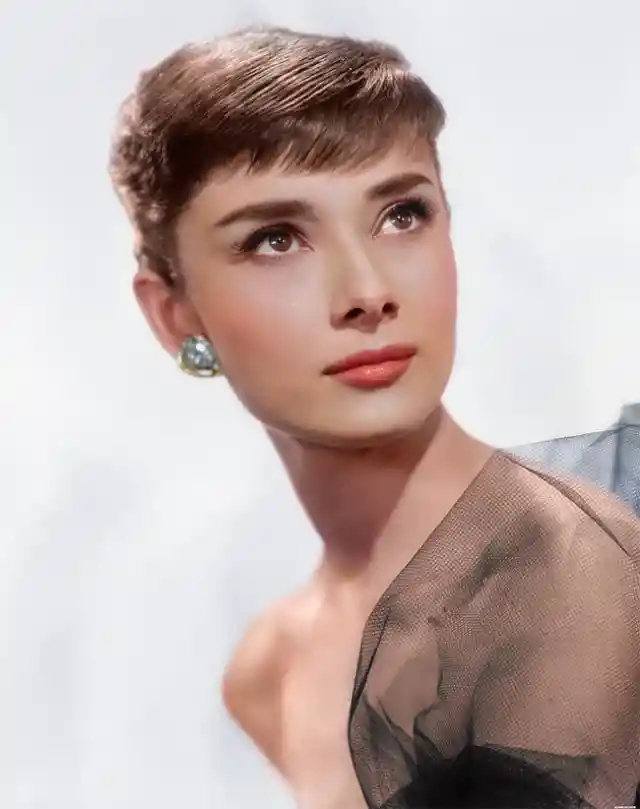

Audrey Hepburn was a British actress and humanitarian, as well as an international cultural and fashion icon. She was born on May 4th, 1929 in Ixelles, Belgium, and died on January 20th, 1993 in Tolochenaz, Switzerland.
Hepburn was inducted into the International Best Dressed Hall of Fame and was ranked by the American Film Institute as the third-greatest female screen legend from Classical Hollywood cinema.
Samurai, 1881
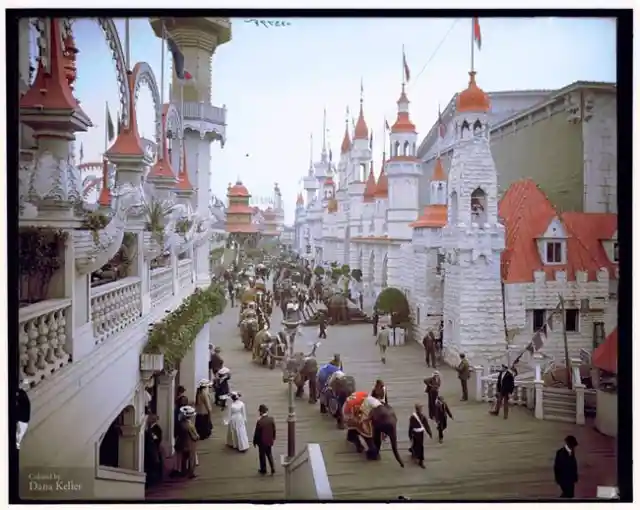
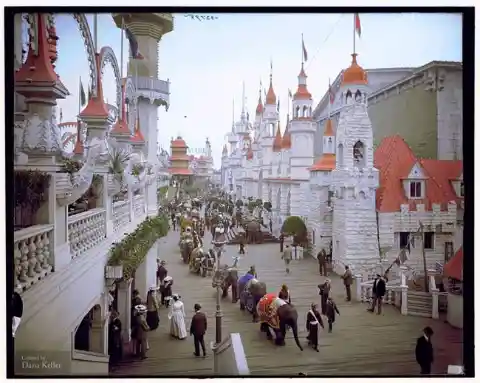
Coney Island opened America’s first-ever roller coaster on June 16th, 1884, at Coney Island, in Brooklyn, New York. Coney Island eventually became an amusement resort at the beach.
During the 1870s and 1880s, luxury hotels were built and a railroad was extended to reach the resort. Coney Island was described as “Heaven at the end of a subway ride.”
Physicist and Inventor, Thomas Edison, 1911
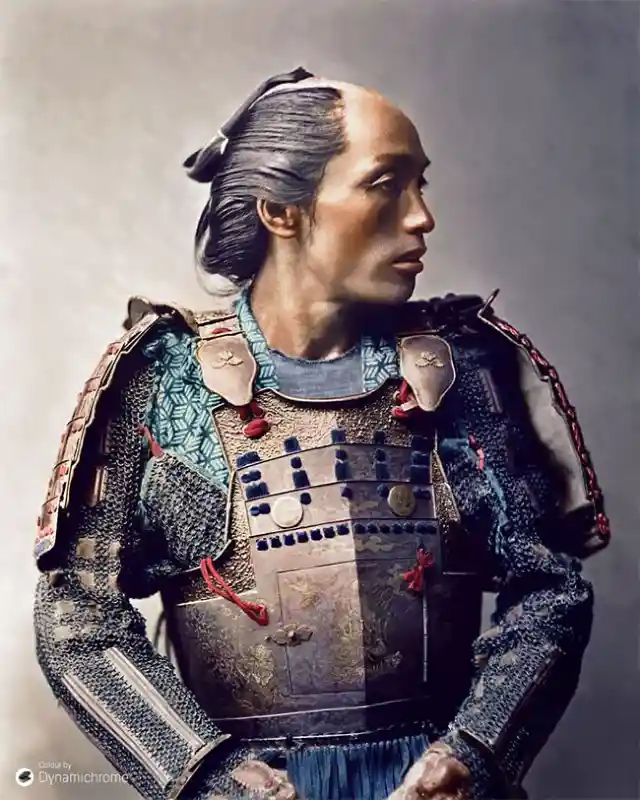
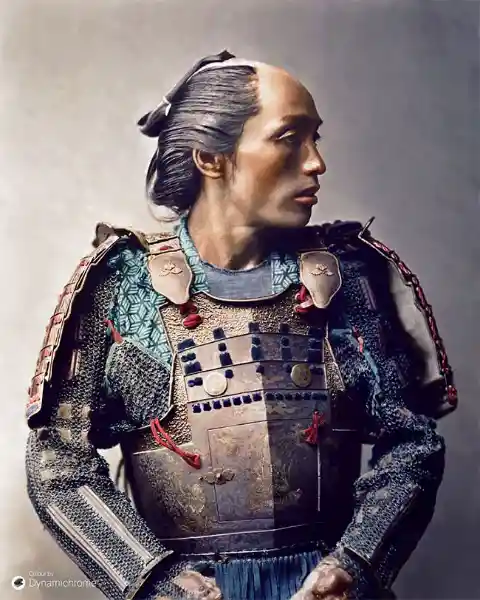
Here is a rare photograph of a samurai in Japan. Samurais were hereditary military nobility in medieval and early-modern Japan.
Samurai held high prestige and had special privileges, as well as being well paid for their services. They were allowed to wear two swords, which was not common outside of their caste.
A Nihang Bodyguard, 1865
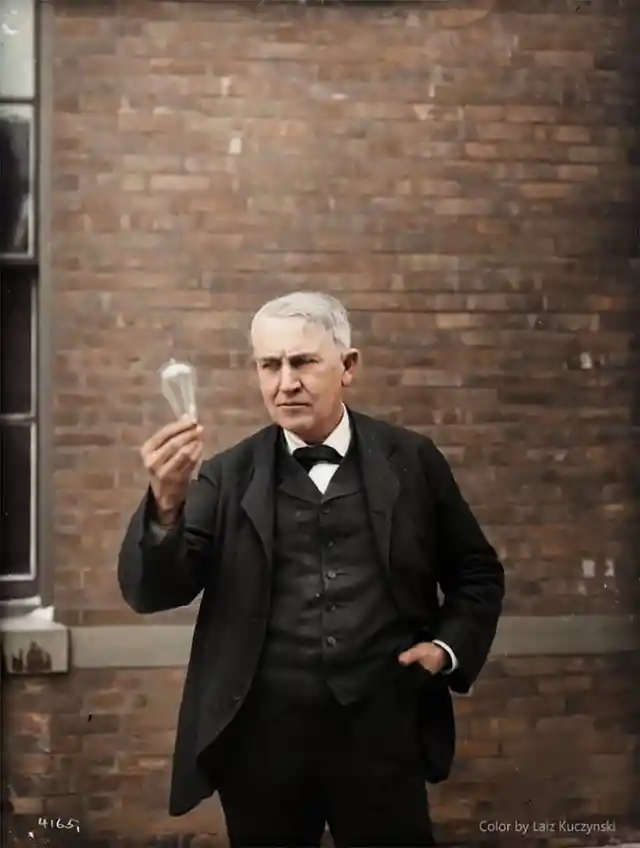
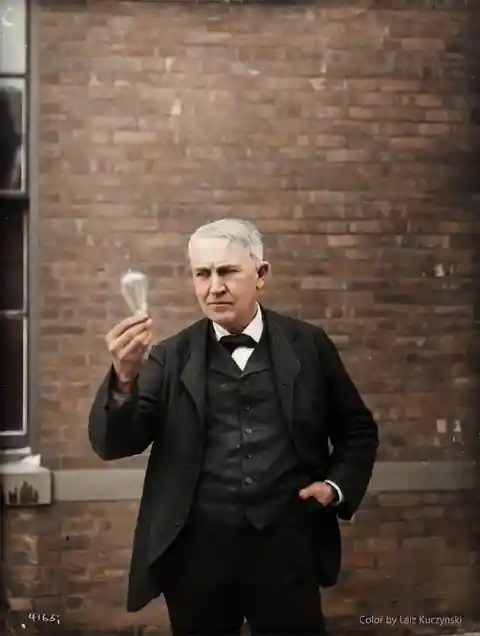
This colorized photograph was taken in New Jersey in 1911. Thomas Edison was an American businessman and inventor who developed many fields including electric power generation, mass communication, sound recording, and motion pictures.
He was born in Milan, Ohio, on February 11th, 1847, and died in West Orange, New Jersey, on October 18th, 1931.
Women in Witch Costume, 1875
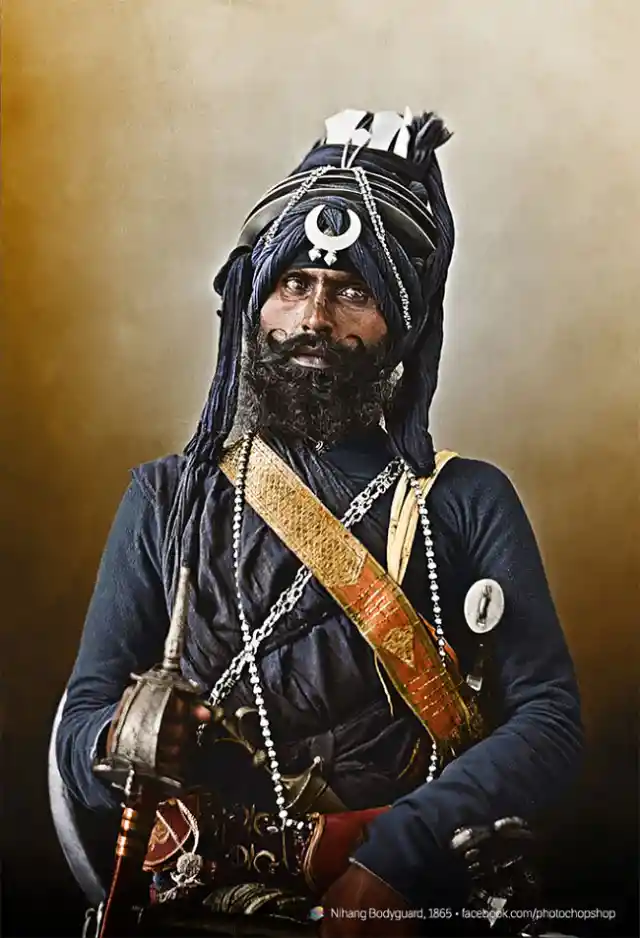
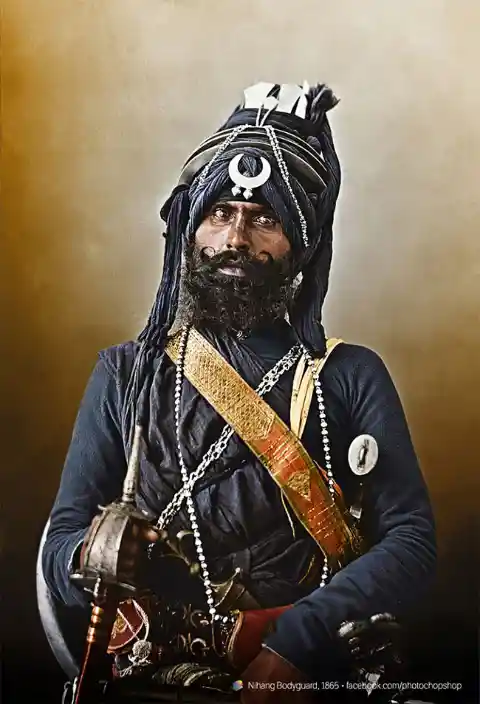
This photograph is of a Nihang bodyguard, or Akali bodyguard, translated as (the immortals). They were armed Sikh warriors who originated in the subcontinent of India. This bodyguard holds a khanda sword in his right hand and in his left hand is a ball and chain.
Traditionally, they were known for their ruthlessness on the battlefield. They used the slogan “chhardi kala” which means “forever in high spirits” and “tiar bar tiar” which means “state of ever preparedness” for unforeseen events.
“King of Tattooists,” 1930
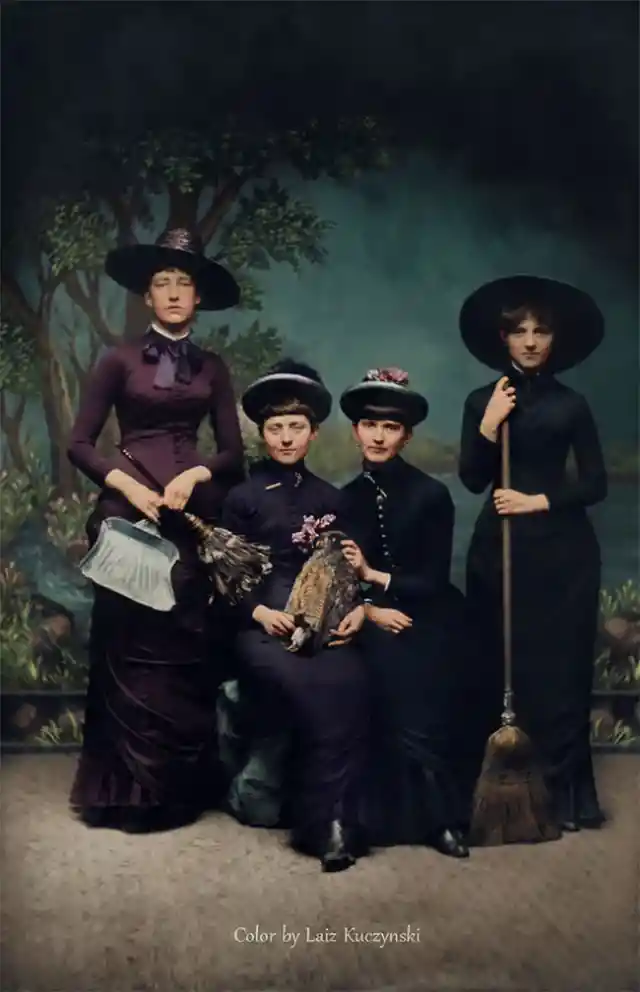
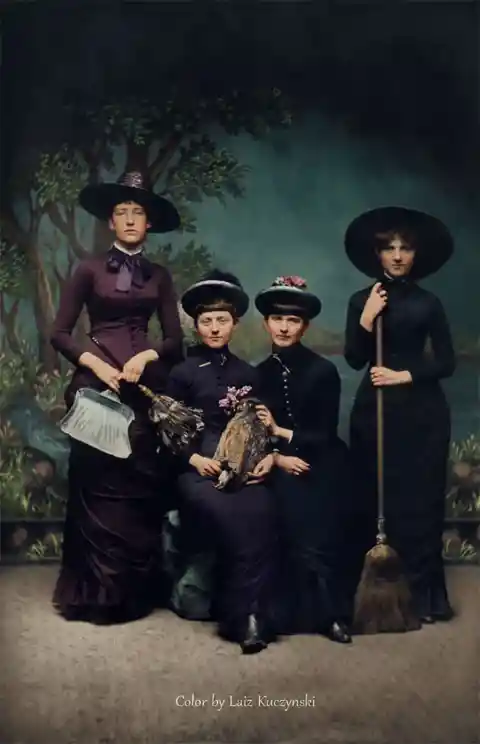
A group of four women dressed as witches poses for a portrait. The women in the middle appear to be holding some sort of deceased creature on their laps, while the women on either side hold brooms and a dustpan.
The idea that witches should have brooms came around in the 15th century when an image with a witch flying on a broomstick first appeared, meaning to represent sexual and spiritual depravity.
Buffalo Bill Cody, 1889
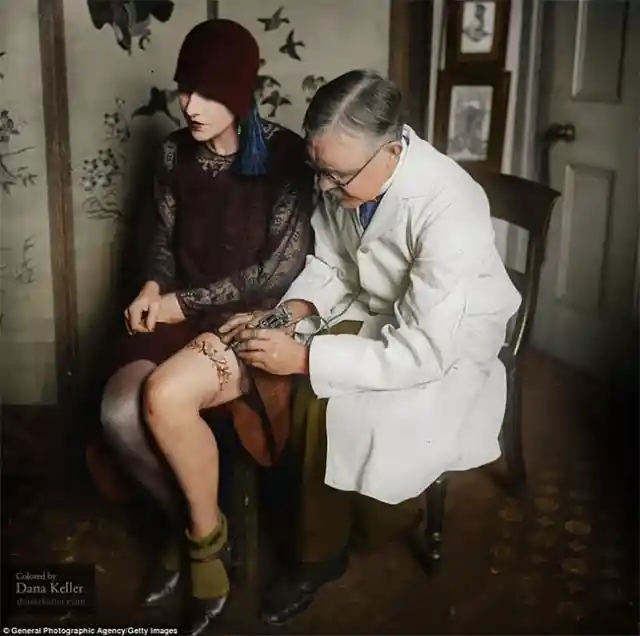
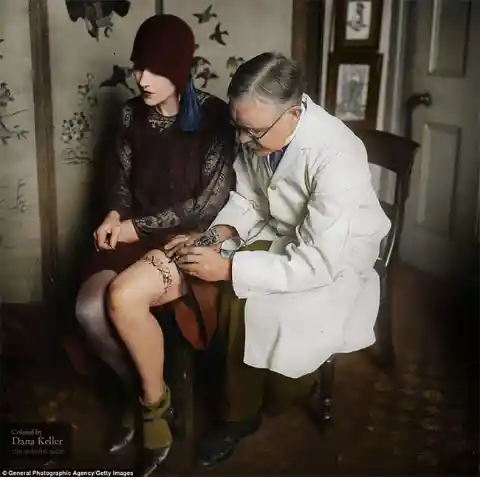
British tattoo artist, George Burchett, also known as the “King of Tattooists.” He was born on August 23rd, 1872, and died on April 3rd, 1953. He was originally from England.
His career spanned between the reign of Queen Victoria and Queen Elizabeth’s ascendancy during a time when tattoos were very outside of the norm within society.
General William Tecumseh Sherman, 1864-1865
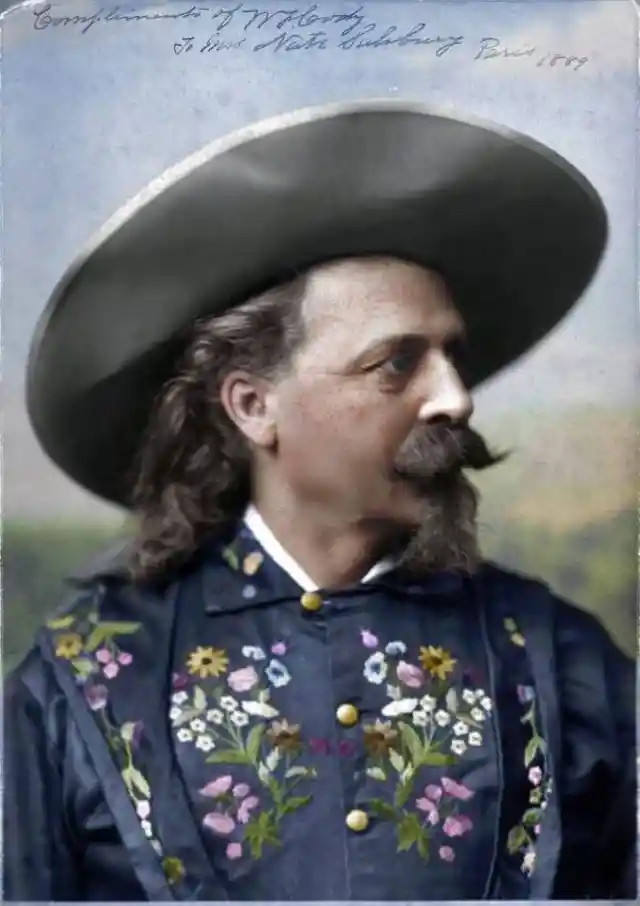
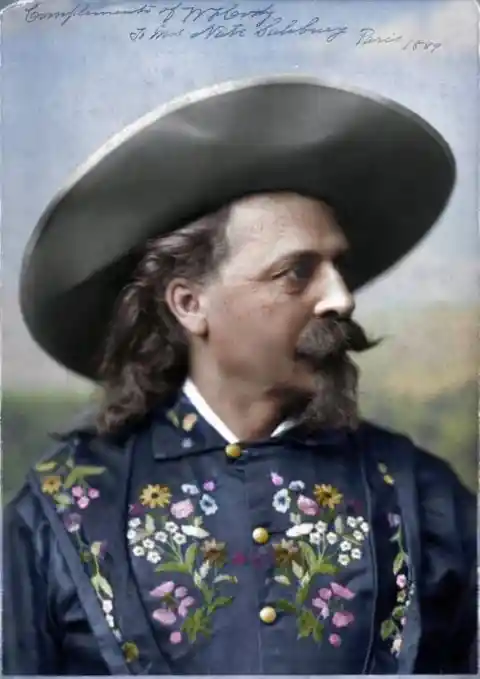
William Frederick “Buffalo Bill” Cody pictured in 1889. He was an American soldier, showman, and bison hunter. He hailed from Le Claire, Iowa Territory, however, he spent much of his time in his father’s hometown in Ontario, Canada.
Buffalo Bill’s fame is due to his hunting and killing of over 4,000 buffalo. He also had a traveling Wild West show which traveled between the United States and Europe around 1870-1920.
A Window Washer At Work
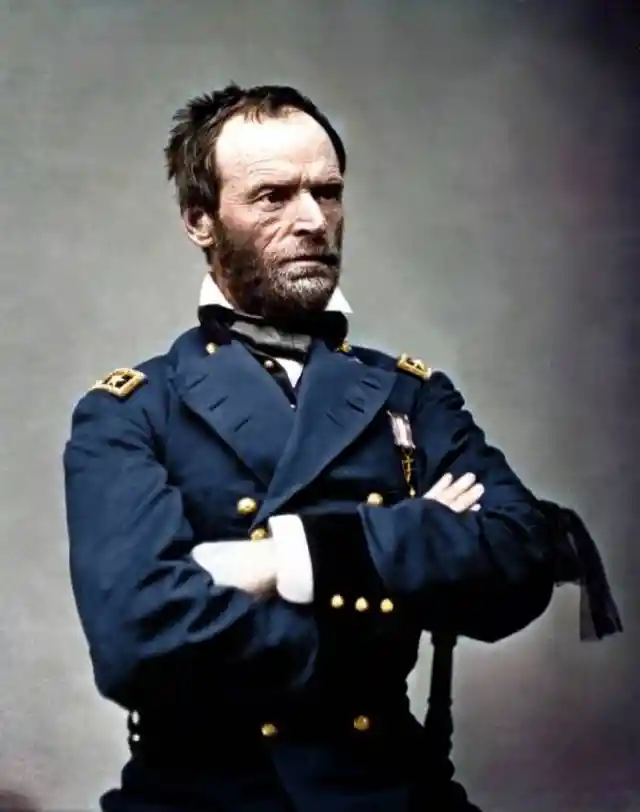

General William Tecumseh Sherman was a soldier in the American Civil War. General Sherman was a part of the Union Army–the winning side. He was also a businessman, educator, and author.
He gained recognition due to his command of military strategy and his “scorched earth” tactics against the Confederate States.
Visitors At The Fair, 1942
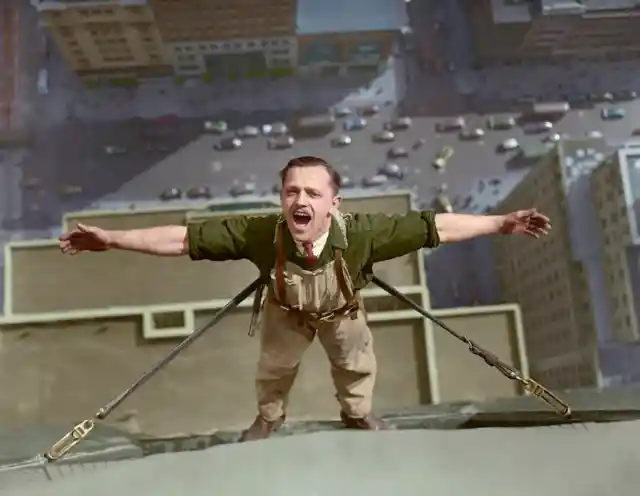
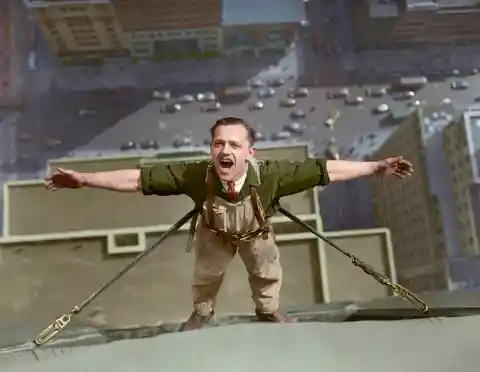
A window washer leans back for a photograph while on the job. He was working on the Empire State Building on March 24th, 1936.
The Empire State Building is a 102-story art deco building located in Midtown, Manhattan, New York, and was built in the 1930s.
Protests Against School Integration, 1959
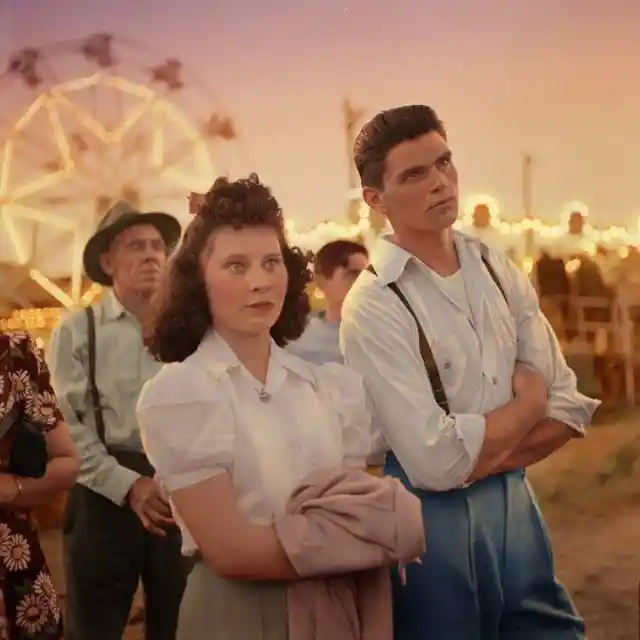
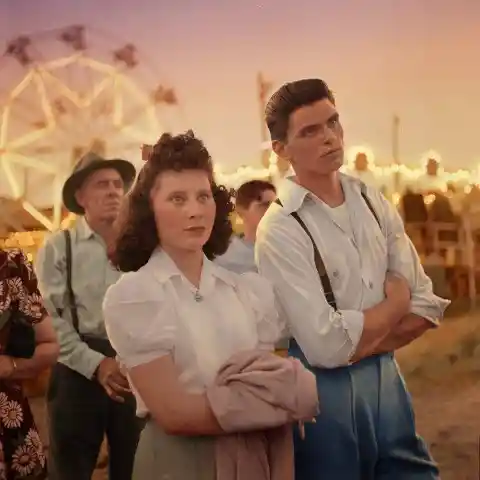
A young couple attends a fair in Klamath Falls, Oregon, in 1942. They appear to be watching a show of some sort, as they are staring with engaged eyes toward something that the camera cannot see.
The photo is beautifully colorized, with a colorful sunset in the background and the couple both having rosy cheeks and pastel clothes.
Testing Of Bulletproof Vest
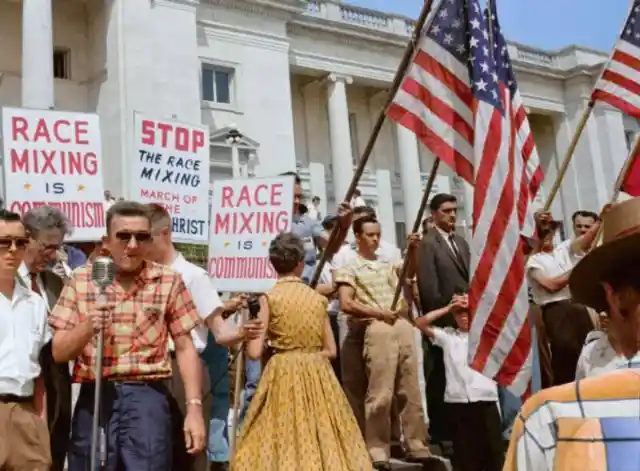
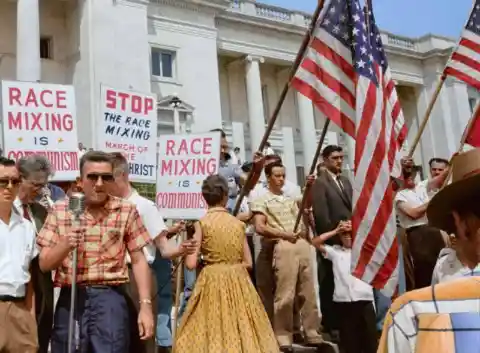
Protestors in Little Rock, Arkansas gather to rally against school integration. This protest took place in 1959 at the thought of Black Americans and White Americans attending school together.
Protestors waved American flags and held signs, equating integration to communism. Ultimately, the protestors were unsuccessful, as America integrated.
Operation Torch
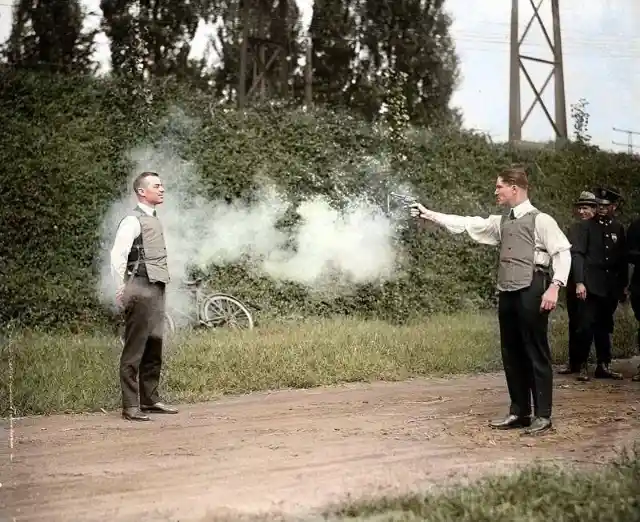
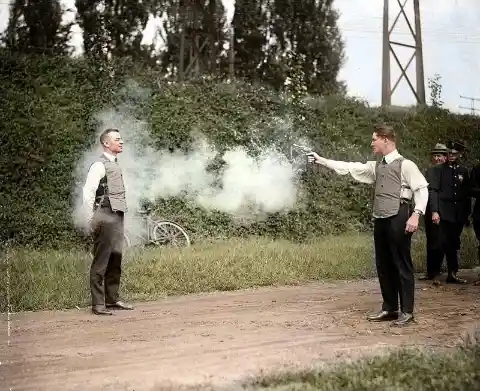
Casimir Zeglen, the inventor of bulletproof vests, tested one of the first prototypes in Washington, D.C. in 1923.
Casimir was a Polish priest who invented a silk vest to protect against bullets. His ingenious invention has gone on to protect many law enforcement officials.
New York Subway
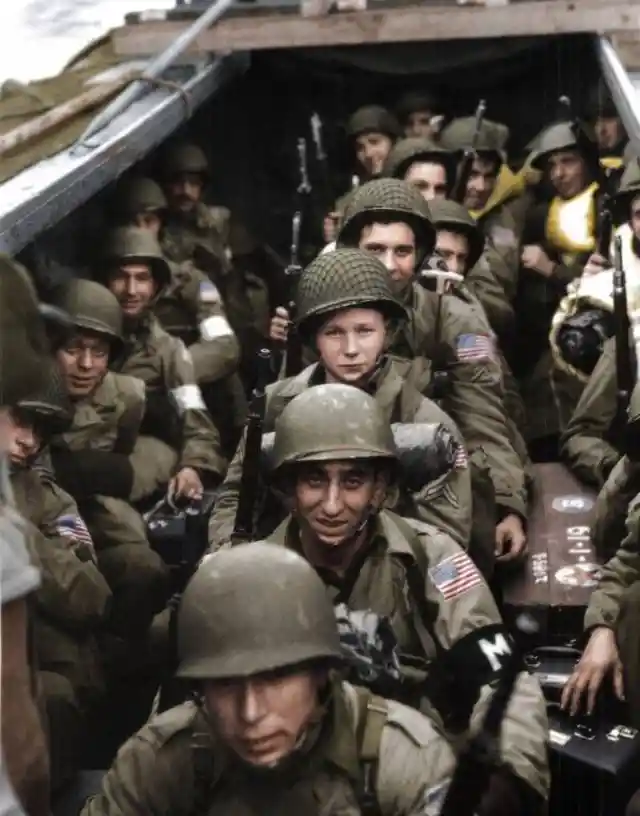
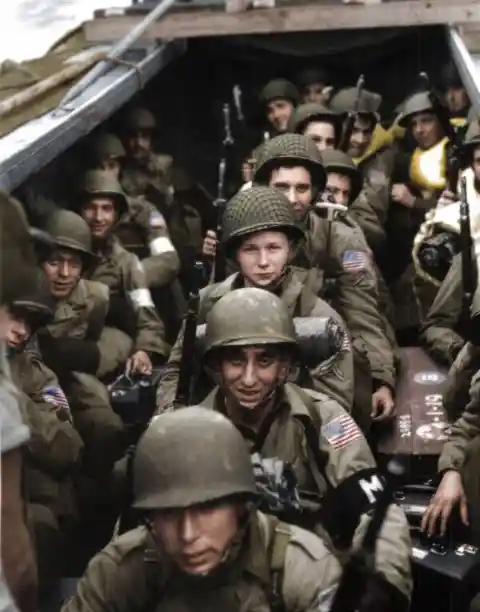
U.S. soldiers prepare for an amphibious landing in the midst of World War Two’s Operation Torch. The photo was taken on November 8, 1942, around three years before the end of the war.
Operation Torch was an Allied invasion of the French-colonized area of North Africa. It was mutually beneficial for both the British and American objectives.
Walt Whitman, 1868
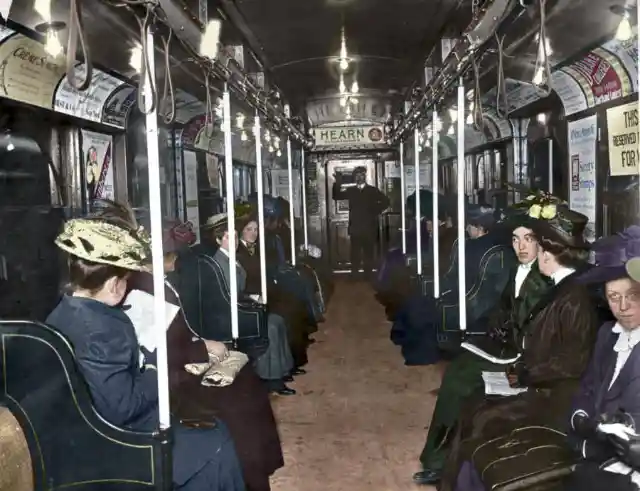
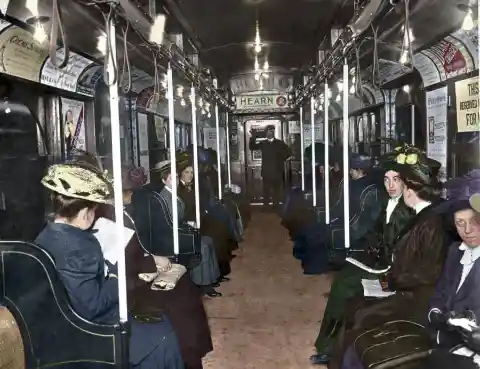
Pictured is the inside of a New York subway car including stylish and impeccably dressed women passengers seated and chatting while the unformed male conductor presides over them.
The photograph was taken circa 1910 and shows how long the New York subways have been in transit and shuttling people to their locations.
Wilbur Wright Taking Flight
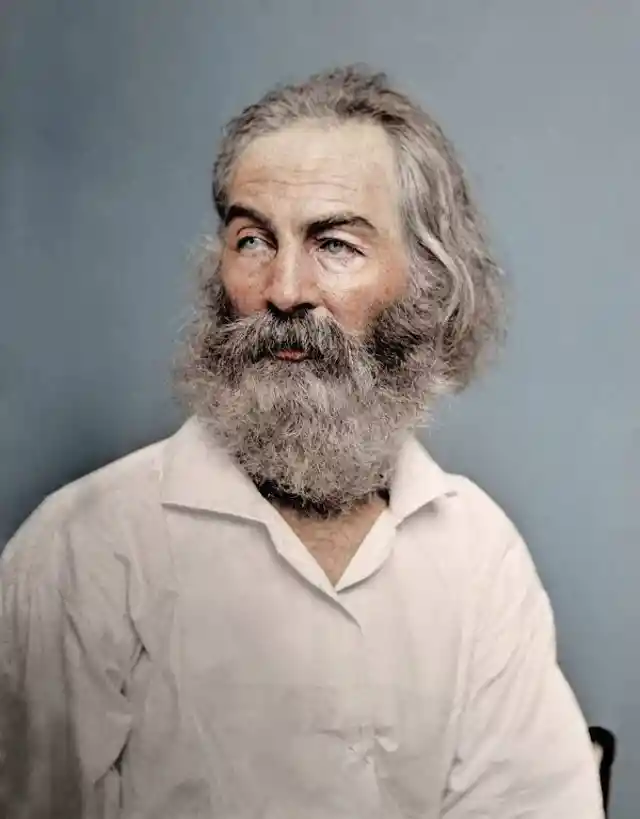
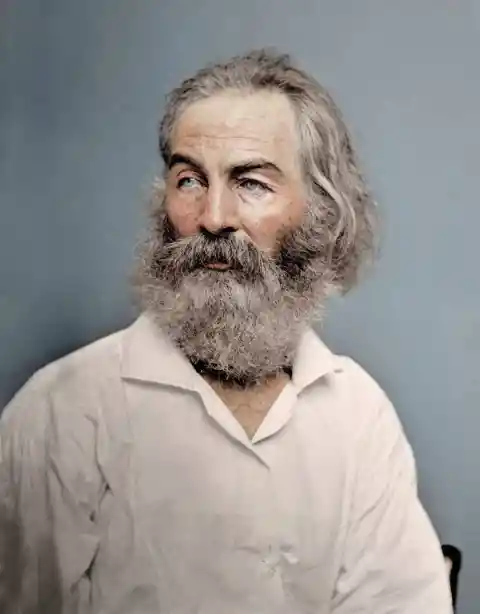
Poet Walt Whitman in the year 1868. Walt Whitman was an American poet, journalist, and essayist. Walt Whitman is often called the father of free verse
Walt Whitman’s most famous poem was called Song Of Myself and is an example of the free verse that he is so well known for.
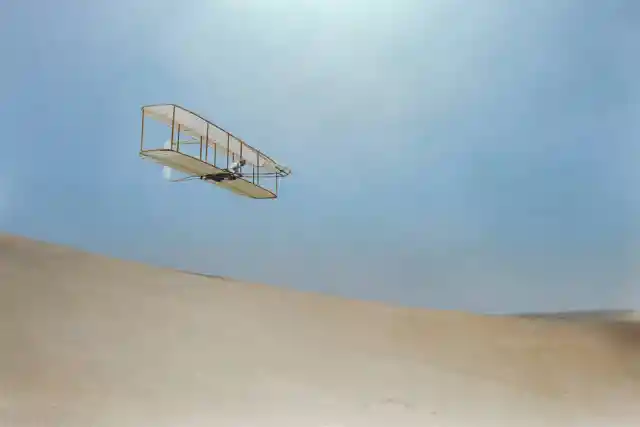
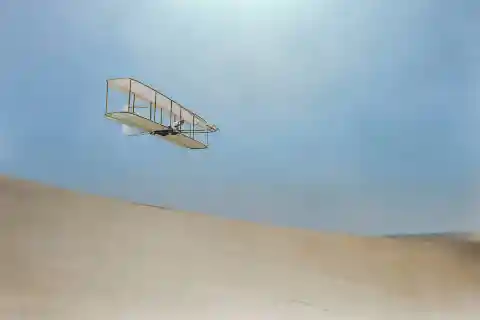
One of the most famous pioneers of aviation, Wilbur Wright, was photographed gliding in a flying machine that predates the one used to complete the first-ever controlled flight.
This photo was taken in 1902, while the historic first-ever flight was in 1903 in the U.S. state of North Carolina.